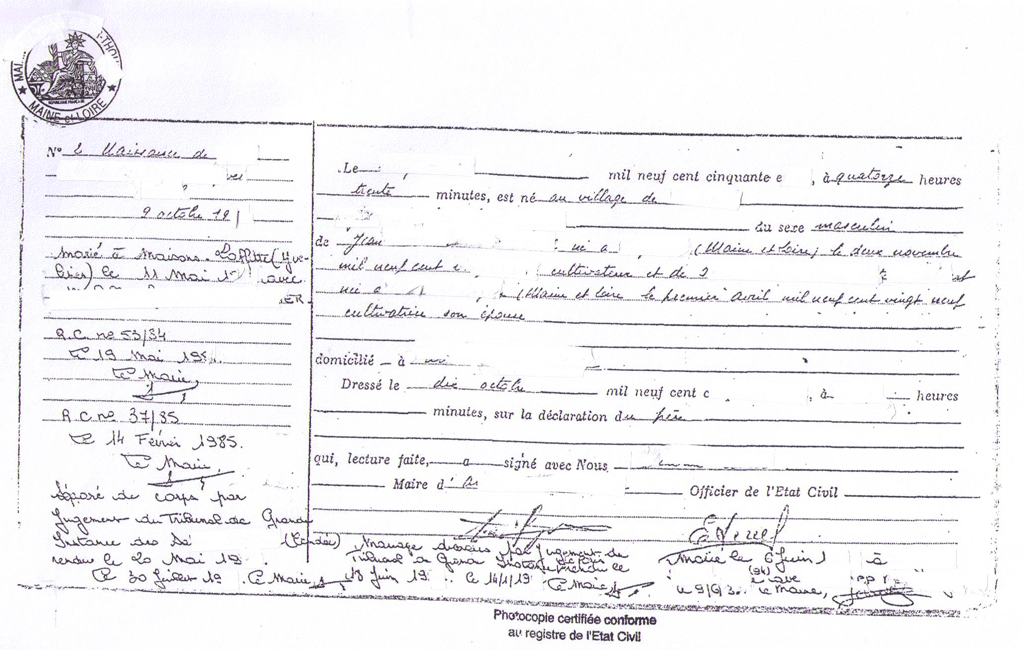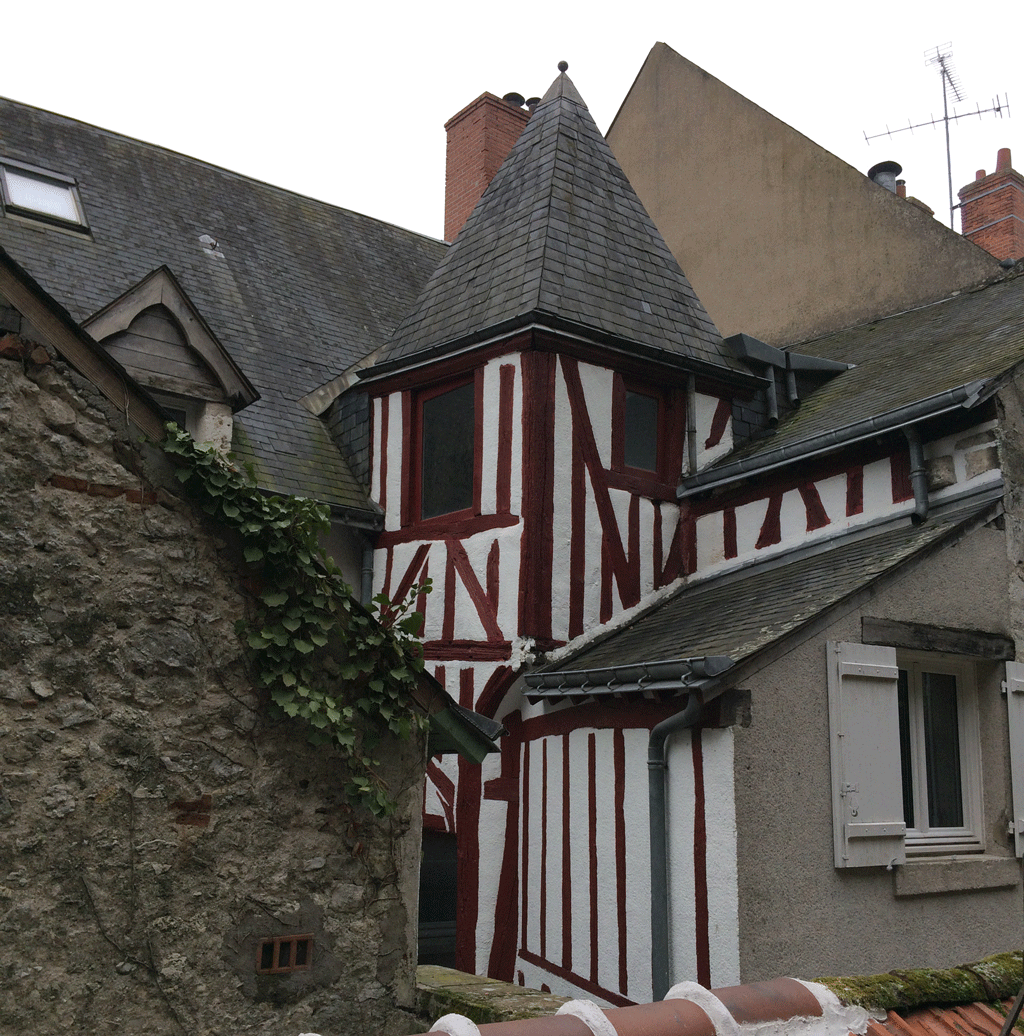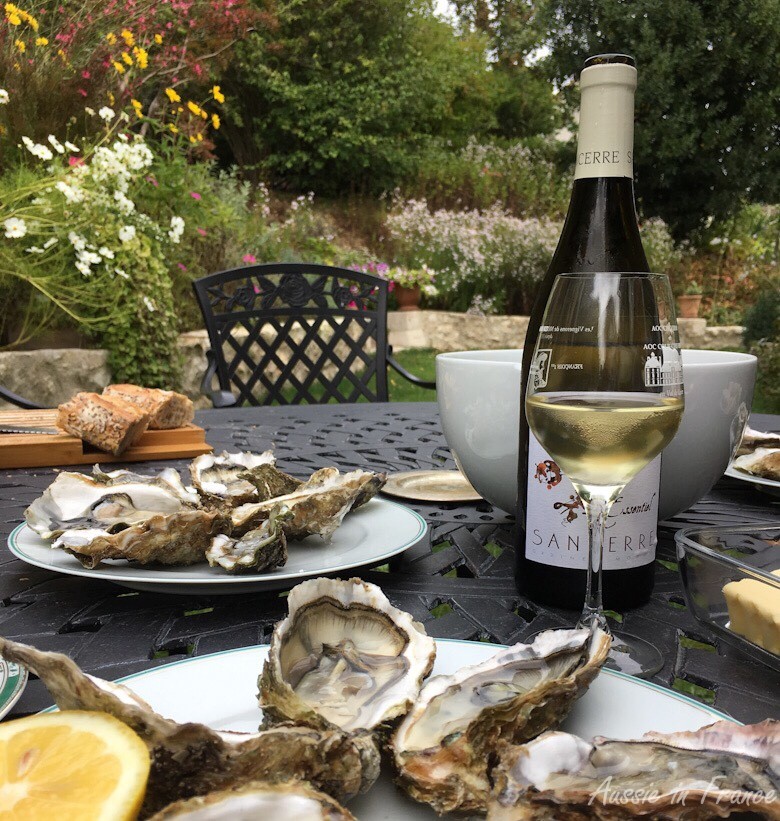
All posts by Rosemary Kneipp
Wait for the Ice Saints – Il faut attendre les saints de glace
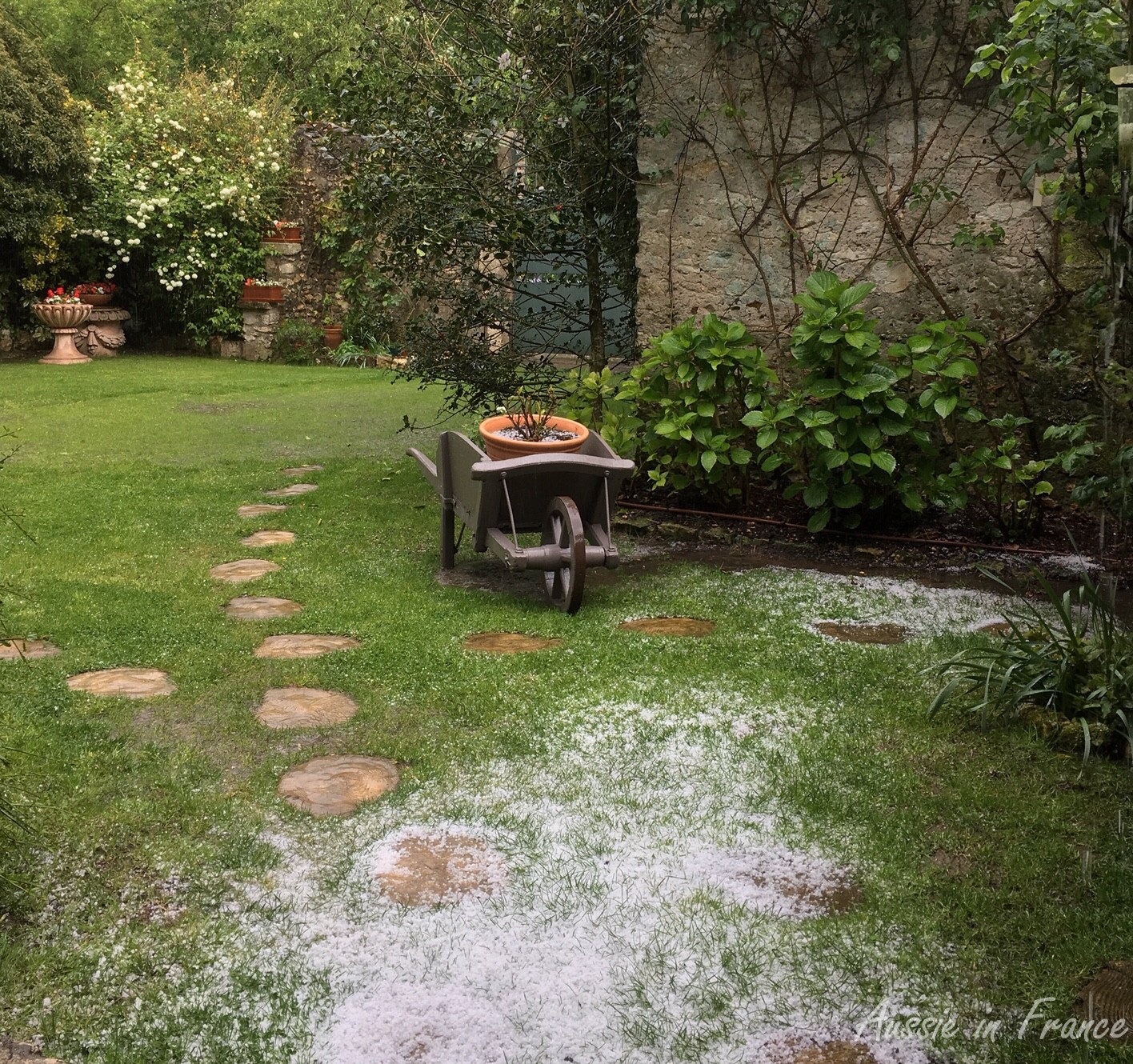
There is a saying in France that you have to wait until after the ice saints – 11th, 12th and 13th May (Mamert, Pancrace and Servais) before you plant tomatoes and flowers like Busy Lilies. Well my tomatoes are fine because they are still in the laundry but not the Busy Lizzies or the plumbago in the barrow. Sigh.
Cette année je n’ai pas écouté le dicton qui dit qu’il faut attendre les saints de glace le 11, 12 et 13 mai avant de faire les plantations d’été. Mes impatiences ont souffert ainsi que le plumbago dans la brouette mais pas les tomates qui sont à l’abri. Oh la la!
Why must birth certificates in France be less than 3 months old?
Most foreigners living in France are asked at some stage to deliver a full birth certificate that is less than 3 months old. Why three months?
If you’ve even seen a French birth certificate of someone who has been married, you will understand why.
French birth certificates are “annotés” which means that any change in civil status is recorded on the birth certificate itself – marriage, civil union, separation, divorce, remarriage, death … It’s like a personal history rather than a record of a single event. This is also the purpose of the livret de famille*.
As a result, the French authorities always ask for a recent certificate, which is defined as less than 3 months old. Birth certificates are obtained from the town hall of the place of birth and are free of charge. You simply send a photocopy of your identity card and a stamped addressed envelope with a cover letter saying who you are and what you want and they usually arrive in a few days. You can also go to the town hall in person. Since February 15th 2019, birth certificates can also be obtained in multilingual versions (i.e. all the languages of the European Union).
In most countries other than France, birth certificates are not annotated. As a result, there is no reason to submit a certificate of less than 3 months, nor a translation of less than 3 months. Unfortunately, a lot of authorities are not aware of this. I am a sworn translator (Orléans Appeal Court) and have just translated a UK birth certificate for a British citizen who is getting married in a neighbouring town in the Loire Valley because the local town hall simply knows nothing about the regulations and my client doesn’t want to mess around.
I have personally used the same Australian birth certificate for countless cartes de séjour, two marriages, one divorce and a successful application for French citizenship. Each time, I explained that “les actes de naissance en Australie ne sont pas annotés.”
On the French official website service-public.fr, it says:
“Un acte de naissance, de mariage ou de décès demeure valable tant que les éléments qui y figurent n’ont pas été modifiés.” https://www.service-public.fr/particuliers/vosdroits/F10449. i.e. a birth, marriage or death certificate remains valid as long as the information given in the certificate has not been modified.
This means that, unless your name has changed (for a reason other than marriage) or there was an error in your initial certificate, you can use any full birth certificate issued since you were born. If questioned (which I very much doubt), all you have to do is quote the above sentence if an authority insists on a certificate less than 3 months old. Good luck!
*livret de famille: this is a little booklet you are given when you marry. It is added to each time you have a child. It also records divorces and deaths.
Happy New Year 2019
This is my absolute last chance to write my New Year post and wish you all a wonderful 2019, as tomorrow is the first day of February. I have an exciting year ahead – I am going to retire on 30th June (although I shall keep up my certified translations for a few more years). Retirement will, I hope, give me more time to blog.
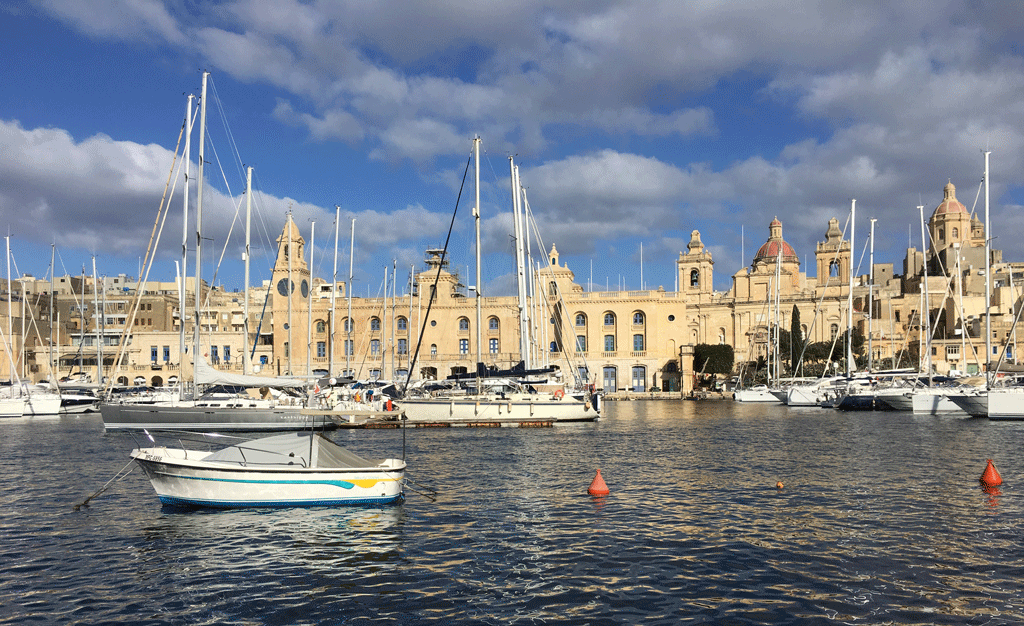
Travel continued to play a big role in our lives this year, with our first trip away in February, to the island of Malta, where we stayed in a flat called Marine View in Senglea with a most stunning view both day and night. There were many interesting places to visit and the weather was wonderful, but Cyprus, where we went last year, remains my favourite Mediterranean island.
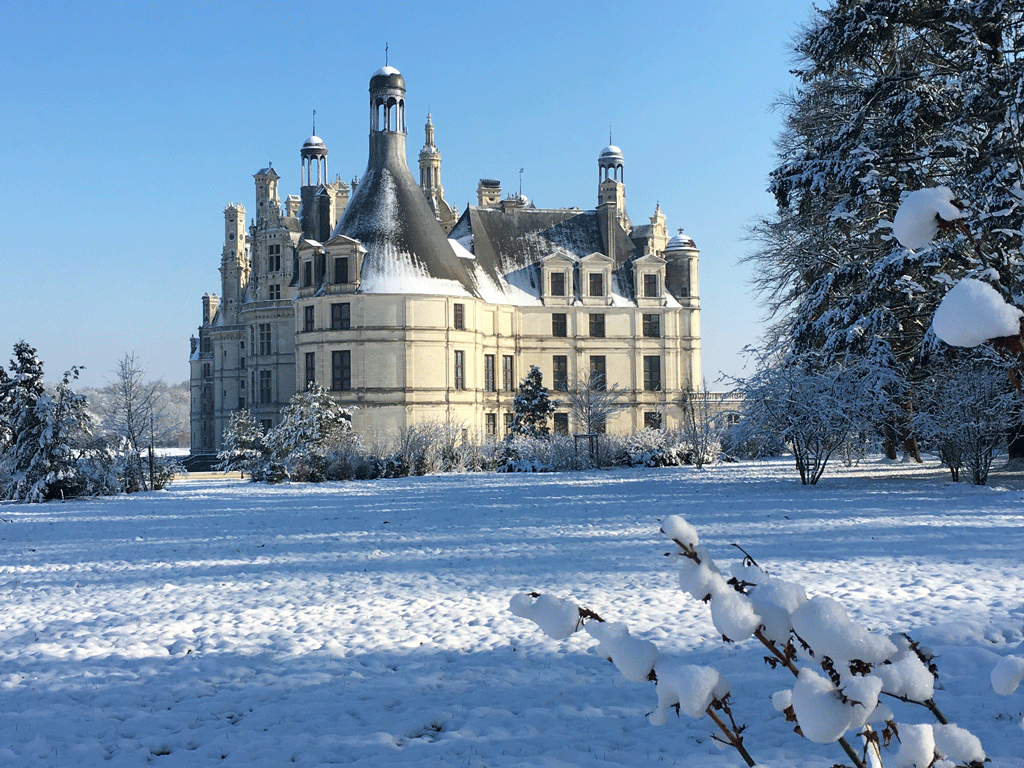
A snowfall on our return provided the occasion for my most stunning photo yet of Château de Chambord which remains high on the list of our cycling destinations in summer and a great place to walk in the winter.
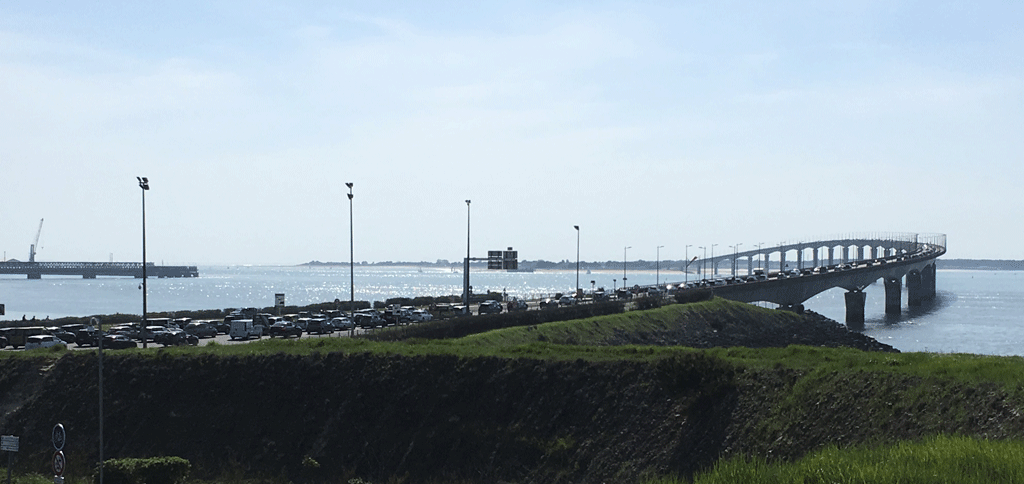
In April we went to La Rochelle for a long week-end and had a truly unforgettable experience at Christopher Coutanceau’s 2-star Michelin restaurant followed by lots of cycling on nearby Ile-de-Ré. It’s a very busy and lively town and it’s a great place to shop in comfort (especially for a non-shopper like myself). There’s lots of activity at night along the waterfront which made a bit of a change from the Loire in winter.
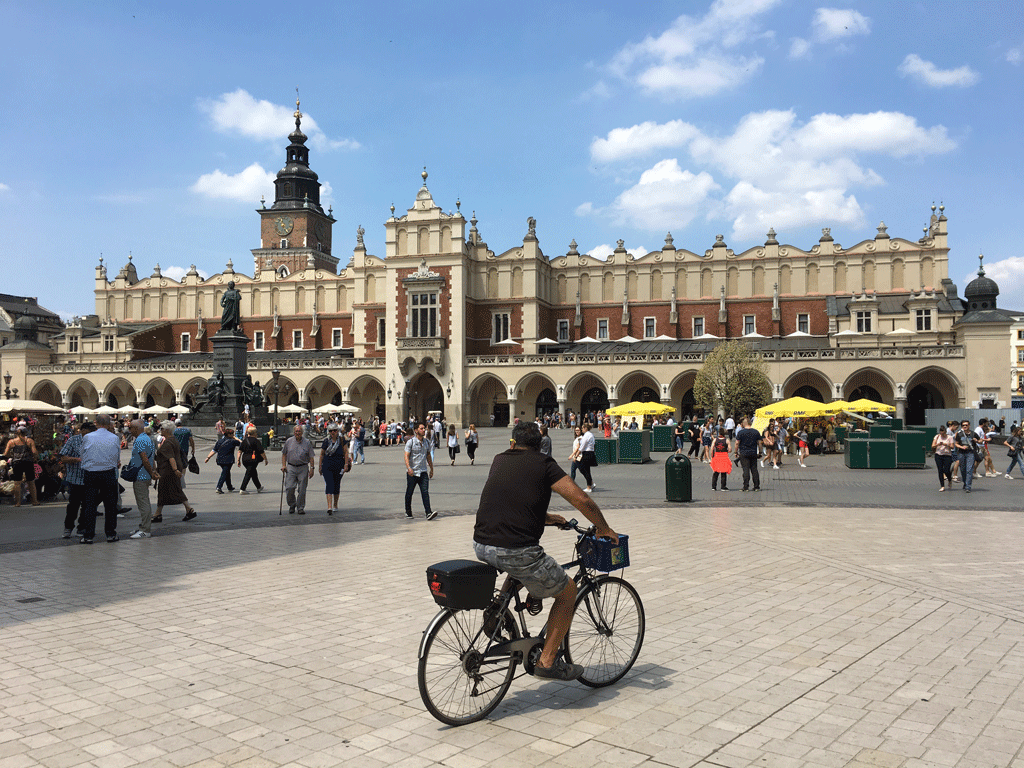
We spent the whole of June in Germany and Poland, on our power-assisted bikes clocking up 800 kilometers for 16 days’ cycling. As ever, Germany was a pure delight. It is just so geared to cyclists with all its bike paths and rest-stops and I adore the colourful half-timbered houses in all the little towns and villages!
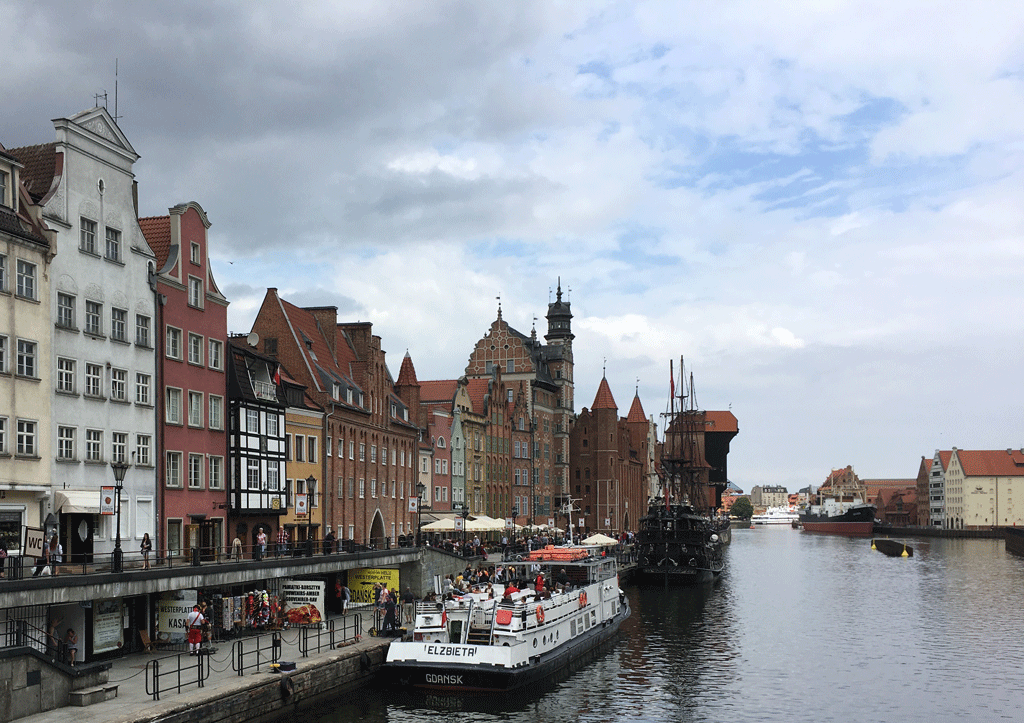
Poland, however, was another story. Although the major cities such as Poznan, Gdansk, Warsaw, Krakow and Wraclow have an amazing network of bike paths, as soon as you get out of the built-up area, you have to take either the main road or go on mountain-bike trails for 20-year-olds in top form. One unforgettable ride through a very sandy forest had me preferring the bitumen and traffic! There are practically no pretty villages which was a great disappointment. The only exception was Gdansk which we really loved. We had an apartment outside the town and were able to cycle happily up and down the coast through the seaside vilalges as well as into the city with its beautiful baroque façades.
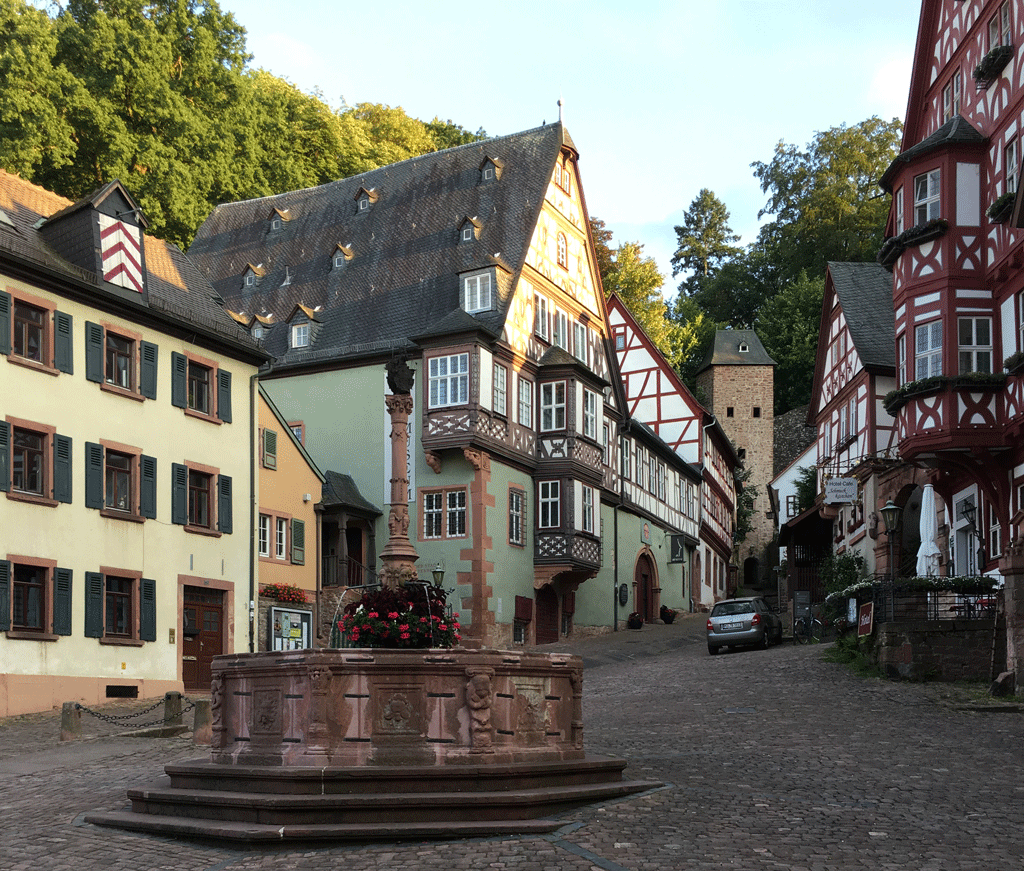
After two weeks in Poland, we were relieved to get back to Germany and follow the Main River! Poland, despite its drawbacks, is a country on the rise economically and that was obvious everywhere we went. It was difficult to have much contact with the locals though, as they were not very welcoming on the whole.
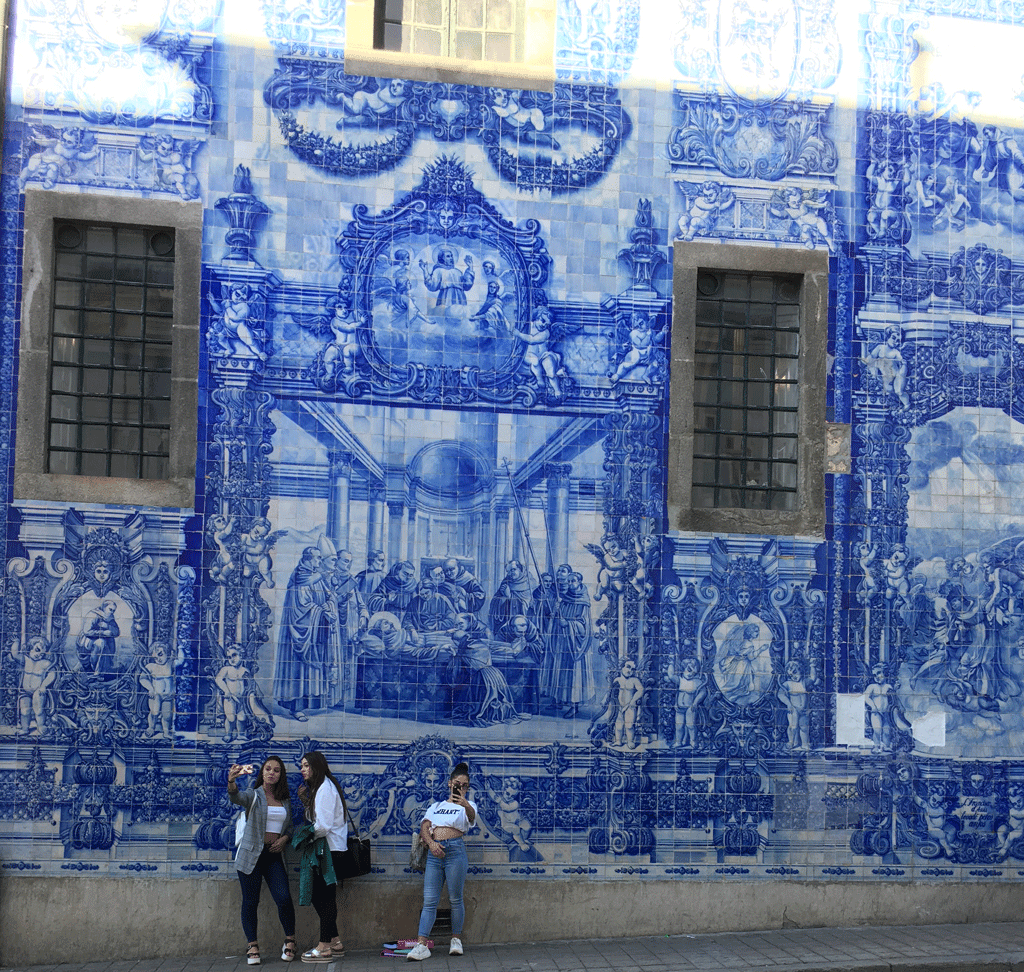
Our week’s holiday in autumn this year took us to Porto with Ryan Air (never again!) from the nearby city of Tours. We enjoyed the first three days in Porto, by which time we had exhausted its possibilities, including a rather hair-raising bike ride along the coast. For the next three days, we took day trains (about one-hour each way) to the very interesting historical towns of Guimaraes, Aveiro and Braga. Poland may be on the way up, but Portugal is definitely going in the opposite direction. It’s very sad to see.
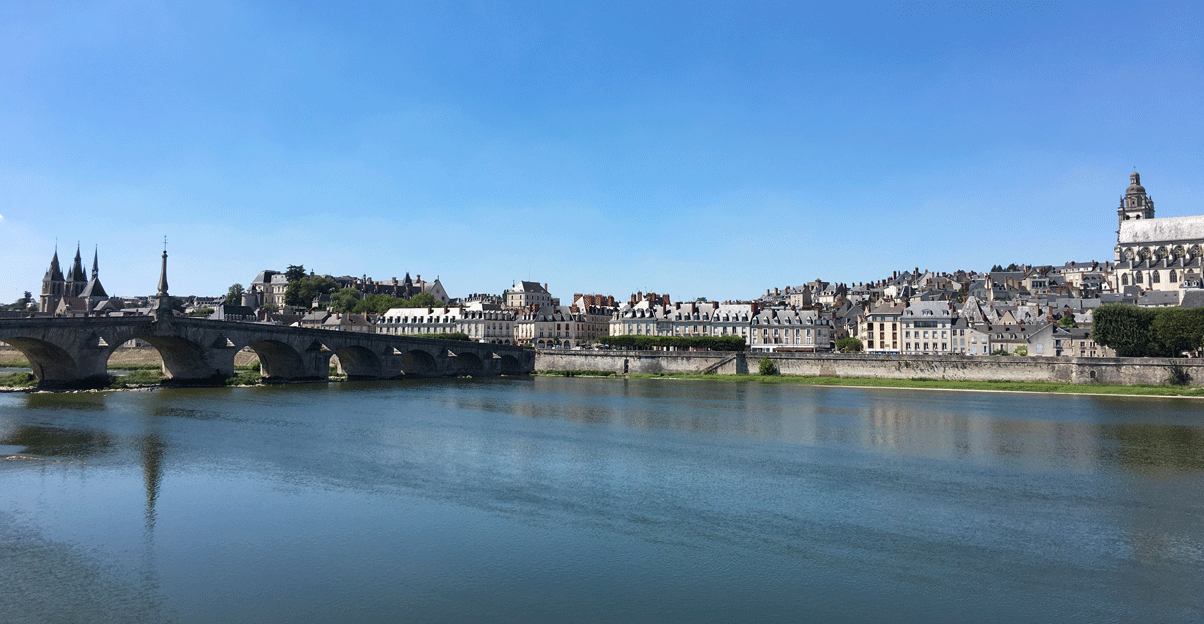
On the home front, we continued to cycle throughout July, August and September nearly every day, often in the evenings for a picnic on weekdays thanks to the long twilight and the amazing weather. We are now up to 5000 kms since we bought our power bikes in May 2017.
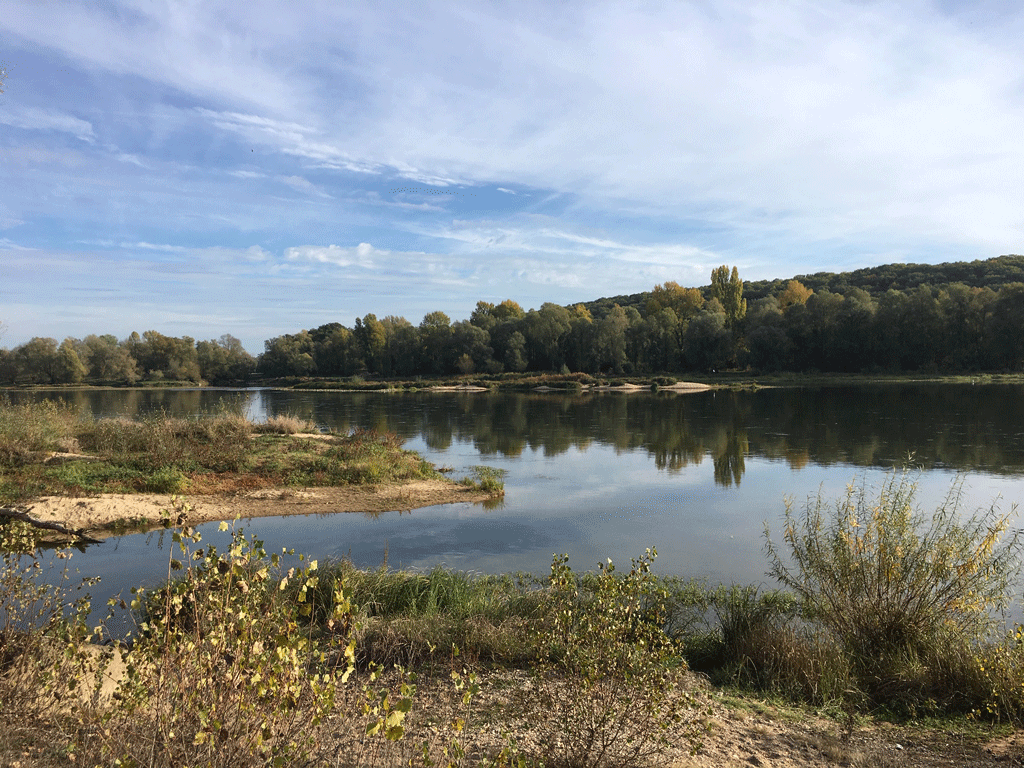
The winter, so far, has been cold and rainy. I’ve been forcing myself to go for an hour’s walk every two days but it’s not very attractive. We have a yearly pass to Château de Chenonceau though which makes a welcome change.
Jean Michel kept on with the renovations at the studio flat in Blois most of the year and it is now ready for holiday accommodation on www.chatelrose.com. I amused myself with some of the decorative features but my brilliant ideas always turned out to be more time-consuming than expected. As it is in a very old building, Jean Michel had to face up to a lot of challenges as well.
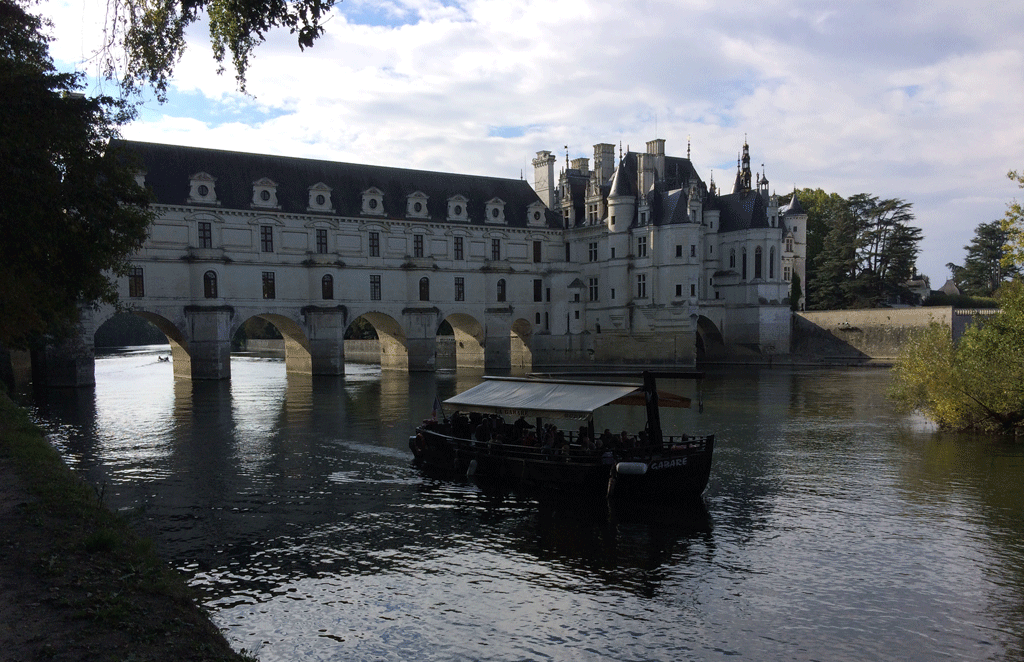
This coming year, especially once I have retired, we went to do more home exchanges as well. And in case anyone is wondering – we still follow the 5:2 diet twice a week and are in very good health! I miss my blog and hope that retirement really will bring me the time and energy I need to write more often! In the meantime, I would like to wish everyone a very happy and fulfilling 2019 and maybe see you over at www.loiredailyphoto.com!
Friday’s French – acte de naissance, extrait d’acte de naissance, copie intégrale, birth certificate, entry of births
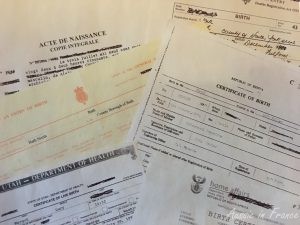 In my work as a sworn translator in France, the document I am asked to translate and certify the most often is the birth certificate.
In my work as a sworn translator in France, the document I am asked to translate and certify the most often is the birth certificate.
In France, it comes by various names: acte de naissance, extrait d’acte de naissance, copie intégrale, extrait avec filiation, extrait sans filiation.
So first, what is an acte de naissance and why is it called an acte? An acte in French is a written document established according to certain rules. In this case, it is the official document written up by the officier de l’état civil (registration officer) in a register kept for this purpose following a declaration of birth. It corresponds to the British “entry of birth”.
Acte de naissance
An acte de naissance is thus called an “entry of birth” in the UK.
So an acte de naissance is an entry in a register. When you ask for a copy of what is written in a birth register in France, i.e. a birth certificate, you have three choices:
Acte de Naissance Copie Intégrale (or copie intégrale avec filiation) reproduces all the information in the birth register, including the following:
– surname, given names, sex, date and place of birth of the person concerned
– surname, given names, date and place of birth of the parents
THIS IS THE INFORMATION REQUIRED ON BIRTH CERTIFICATES USED TO APPLY FOR FRENCH NATIONALITY.
It can also have the following information, called mentions marginales (or endorsements) which makes it different from a regular British, American, or Australian birth certificate:
– Mention of marriage, divorce, legal separation, decease,
– Mention of French nationality (registered declaration, loss, reinstatement, naturalisation)
– Mention of the first issue of a French nationality certificate.
It is because of these endorsements that the French authorities always ask for a birth certificate of less than three months as it provides a record of a person’s civil status throughout their life. Since most of the English-speaking countries do not endorse their certificates, the date of issue of the certificate makes no difference. I used exactly the same birth certificate and its translation for all my resident visas, 2 marriages, 1 divorce and 1 naturalisation.
Extrait d’acte de naissance avec filiation
This is a summary of the information in the birth register:
– surname, given names, sex, date and place of birth of the person concerned
– surname, given names, date and place of birth of the parents
– mentions marginales if they exist
Extrait d’acte de naissance sans filiation
This is a summary of the information in the birth register:
– surname, given names, sex, date and place of birth of the person concerned
– mentions marginales if they exist
In Great Britain, the most common type of birth certificate is called “Certified copy of an entry” and provides the following information:
– NHS number (in the more recent ones)
– name, surname and sex of the person concerned
– year, date and place of birth
– names, surnames, dates and places of birth and occupation of the mother and father
– name of the informant
Its format and other details, however, vary according to the place and year of birth.
There is also a shorter version called a “Certificate of Birth” which only has the person’s given names and surname, sex, date and place of birth, corresponding to the French “extrait d’acte de naissance sans filiation”. IT IS NOT VALID WHEN APPLYING FOR FRENCH NATIONALITY, for example.
In the United States, birth certificates are county-issued documents and not standardised within a state.
In North Carolina and Utah, there is a “Certificate of Live Birth” and a “Standard Certificate of Birth” both containing the following information, with the Certificate of Live Birth being more complete:
– name, surname and sex of the person concerned
– year, date and place of birth
– names, surnames, dates and places of birth and occupation of the mother and father
Florida has a “Certification of Birth” with
– child’s name, date and county of birth and sex
– names of mother and father (but not their birth dates)
South Africa issues a document called a “Birth Certificate”
– ID number
– name, surname and gender of the person concerned
– year, dates and places of birth and ID n° of the mother and father
– endorsements
Australia has different certificates for different states and years of birth, although the information is more or less the same. The document is usually called a birth certificate (sometimes just “Birth”).
– Child (given names, surname/family name, sex, year, date and place of birth)
– Mother and Father (given names, surname/family name, age, birthplace and occupation)
– Name of informant
– Witnesses at birth
– Previous Children of Relationship; Informant/s (name, address);
– Registration Officer (name, date)
Shorter versions exist which do not include the parents’ place and date of birth. THEY ARE NOT VALID WHEN APPLYING FOR FRENCH NATIONALITY.
There are a few idiosyncrasies. More recent ACT birth certificates use the term “Person furnishing particulars” to describe what previously concerned the informant. In Victoria, there is a section called “Endorsements” which is Queensland is called “Notes”. Both the ACT and Victoria include the marriage of the parents. Examples per state can be found on https://www.usi.gov.au/about/forms-id/birth-certificate-australian.
In Canada, it is called a Birth Certificate or Certificate of Birth and comes in two forms: short or long.
The short form gives the following information:
- last name
- given name(s)
- date of birth
- certificate number
- birthplace
- sex
- date of registration
- registration number, and
- date issued
The long form is a certified copy of the birth registration so contains details about
the parents, informants, witnesses, etc. depending on the state.
In Ontario it comes in a bilingual version called Birth Certificate/Certificat de Naissance.
In Quebec, it is called a certificat, copie d’acte ou attestation de naissance (birth certificate or a copy of an act of birth in English) and can be obtained in either English or French but not a bilingual version. The birth certificate is the short form and the copy of an act of birth is the long form.
So, to answer the question “What is a copie intégrale”?, it is a birth certificate that provides the following minimum information:
– given names, surname and sex of the person concerned
– year, date, hour and place of birth
– names, surnames, dates and places of birth of the parents
In the UK, it is called a “Certified copy of an entry of birth”.
In Australia and Africa, it is called a “Birth Certificate” or “Certificate of Birth”.
In the US, it goes by various names, usually containing the expression “Certificate of Birth”.
In English-speaking Canada, it is a long form birth certificate and in Quebec, a copy of an act of birth.
In France, birth certificates are issued free of charge (in a multilingual version* if requested) to:
– The person concerned by the certificate, their legal representative or spouse,
– An ascendant of the person concerned (parent, grandparent),
– A descendant of the person concerned (child, grandchild),
– Or a professional authorised to do so by law (lawyer for their client, for example).
– To any person provided the entry is more than 75 years old or the person has been dead for more than 25 years.
They are obtained from the townhall of the person’s birth, either in person, by post (include a stamped addressed envelope) or on-line.
*The multilingual version is never a “copie intégrale” but only an “extrait d’acte de naissance” and does not have the parents’ birth date or age, nor their profession. They are usually used within the European Union and not accepted by the US government, for example.
The Akubra Saviour
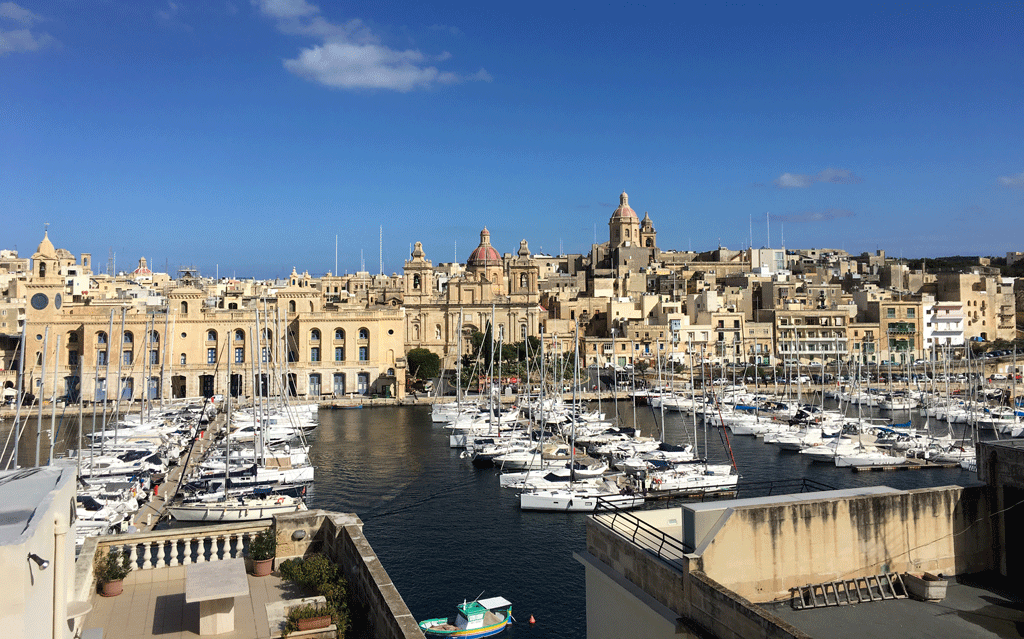 We’ve just arrived in Malta for a week of sun and exploring. It is 1°C when we leave Blois at 5.20 am and 15°C when we arrive in Valetta at 1 pm. After checking out our rental apartment, Marina View, with its stunning view of Vittoriosa across the other side of the Marina, we have an excellent meal at the Enchanté Restaurant on the waterside.
We’ve just arrived in Malta for a week of sun and exploring. It is 1°C when we leave Blois at 5.20 am and 15°C when we arrive in Valetta at 1 pm. After checking out our rental apartment, Marina View, with its stunning view of Vittoriosa across the other side of the Marina, we have an excellent meal at the Enchanté Restaurant on the waterside.
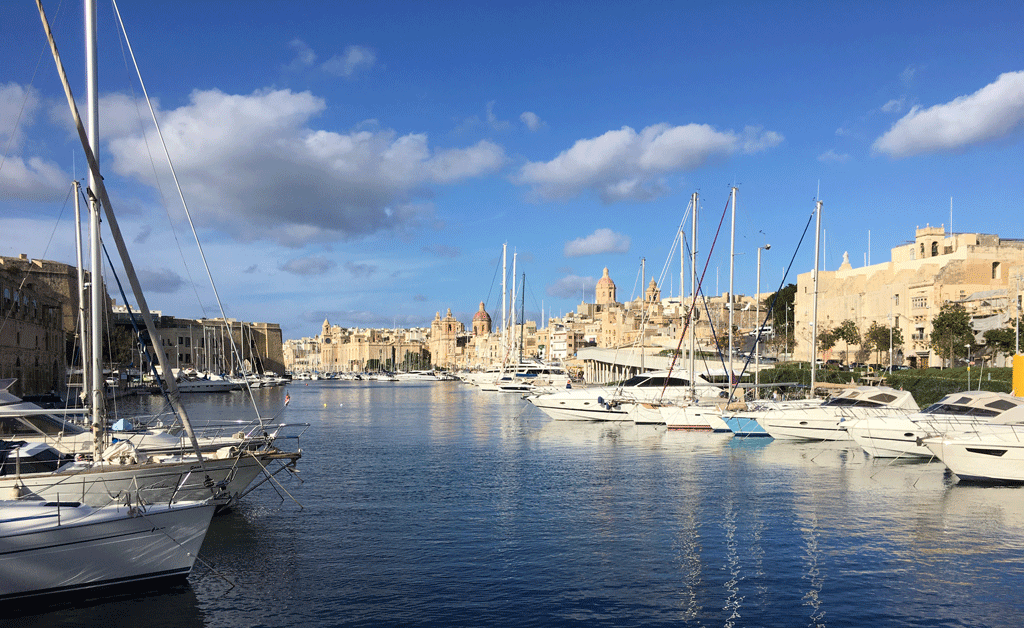 After lunch we walk down the other side of marina and over the footbridge to Vittoriosa. It’s quite windy and my trusty Australian Akubra Traveller* hat blows off my head and into the marina. Oh no!
After lunch we walk down the other side of marina and over the footbridge to Vittoriosa. It’s quite windy and my trusty Australian Akubra Traveller* hat blows off my head and into the marina. Oh no!
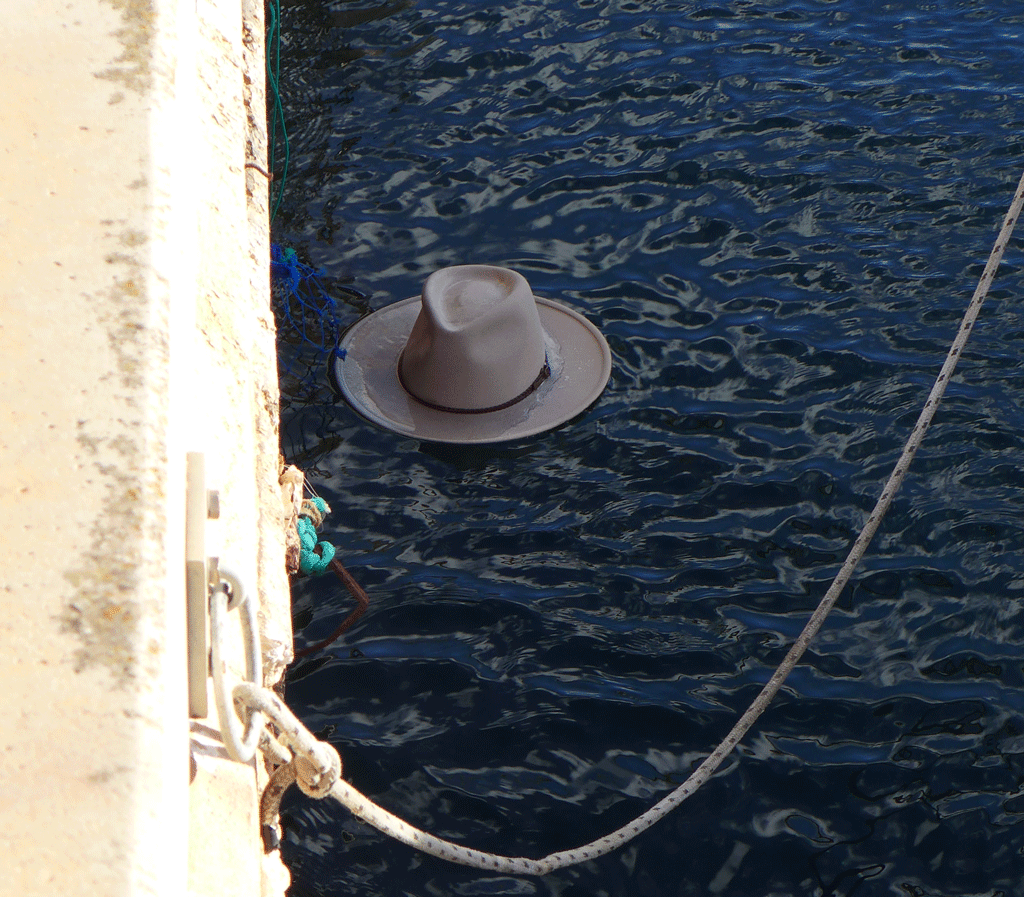 We watch as it makes its way down the marina, hoping it won’t sink. I see a man with a little boat who ferries people across to the other side so I go down to see if he can save my hat.
We watch as it makes its way down the marina, hoping it won’t sink. I see a man with a little boat who ferries people across to the other side so I go down to see if he can save my hat.
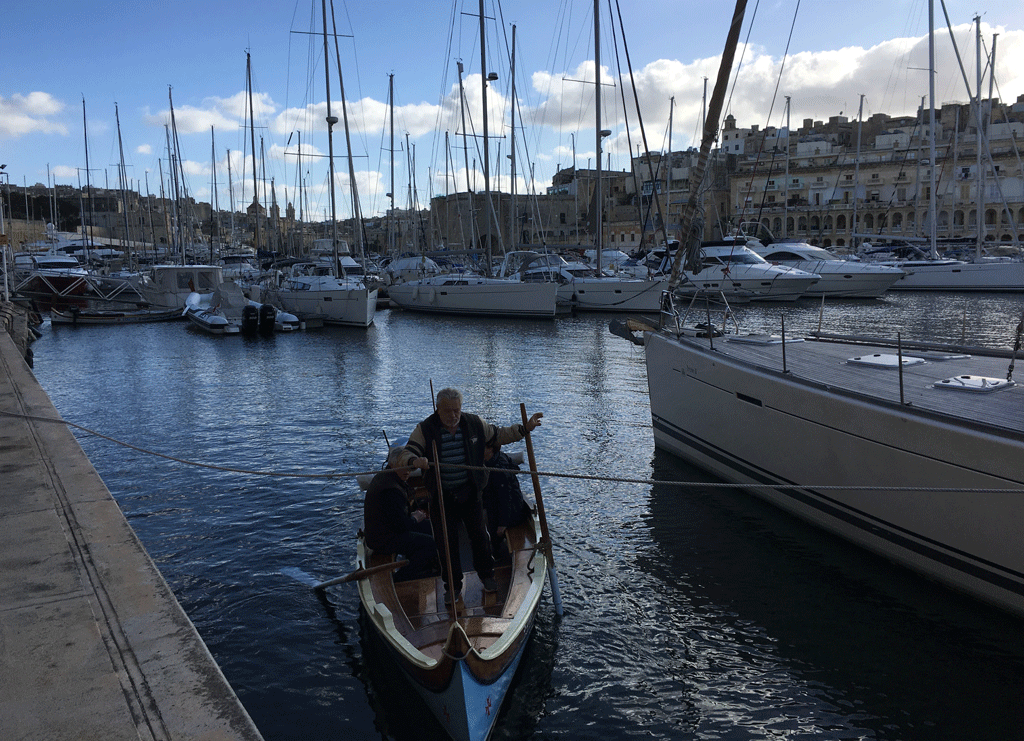 He very nicely manoeuvres under the rope with his passengers on board until he is close enough to swoop down and retrieve the hat. When he hands it up to me I tell him it’s an Australian hat. “From Sydney?”, he asks. “I’ve been to Sydney!”
He very nicely manoeuvres under the rope with his passengers on board until he is close enough to swoop down and retrieve the hat. When he hands it up to me I tell him it’s an Australian hat. “From Sydney?”, he asks. “I’ve been to Sydney!”
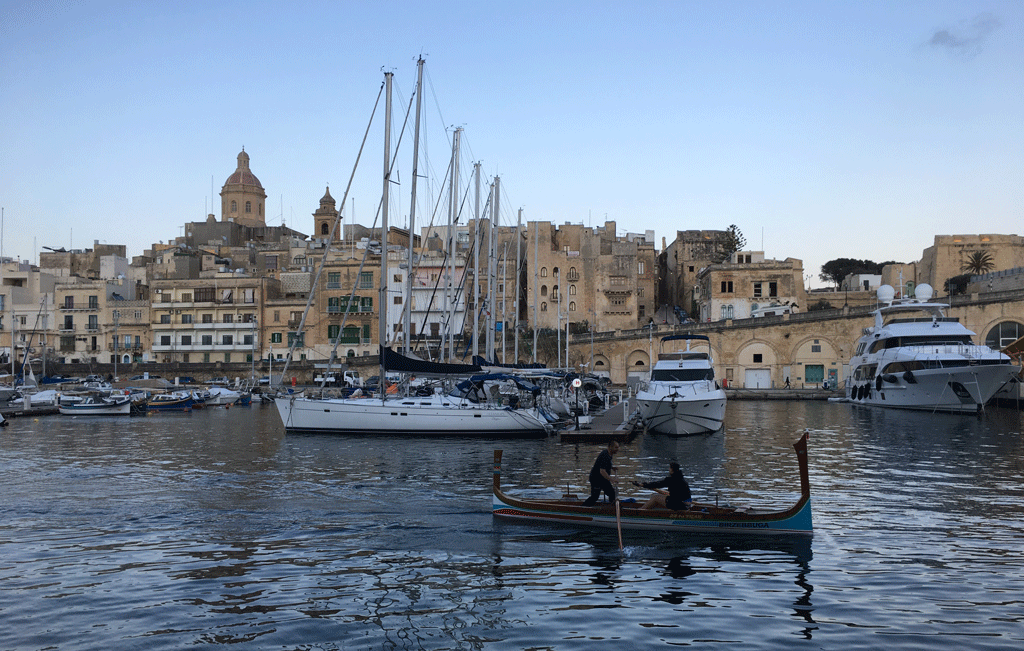 The hat stands up surprisingly well to its dunking but I get sick of carrying a soppy hat after a while and strap it to the back of Jean Michel’s back pack. I won’t be wearing it near the marina again!
The hat stands up surprisingly well to its dunking but I get sick of carrying a soppy hat after a while and strap it to the back of Jean Michel’s back pack. I won’t be wearing it near the marina again!
Friday’s French – place, endroit, lieu
Place sounds like is would be an easy word to translate from French to English and vice-versa. Well, it isn’t. Only rarely does it mean the same thing in both languages.
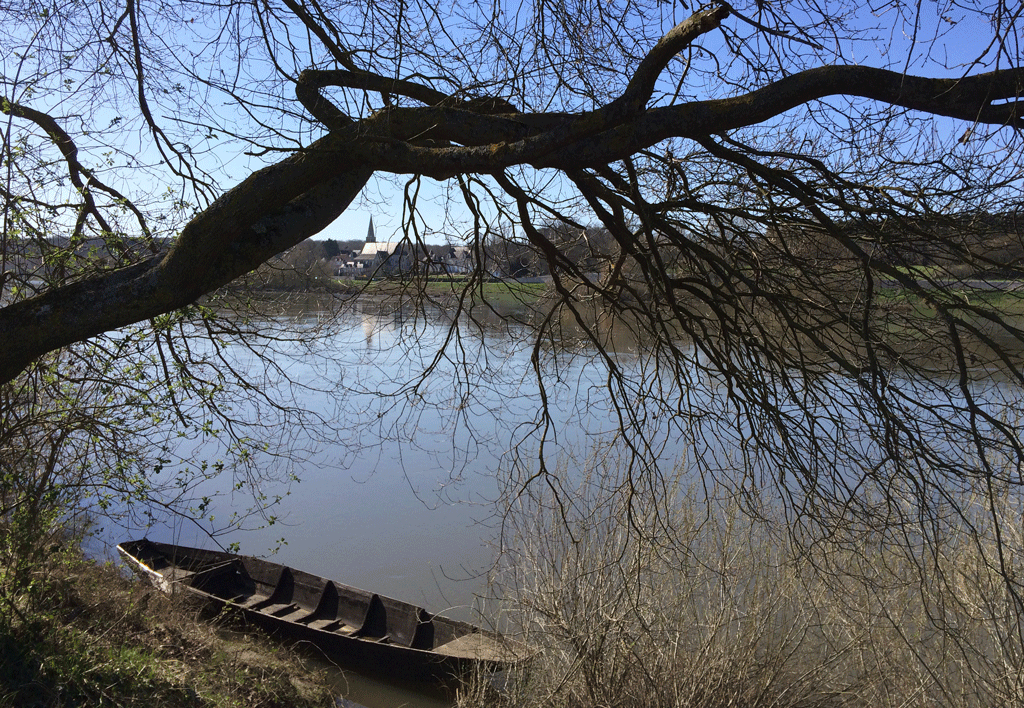
I can think of a couple of situations where the meaning is the same:
Si tu remets chaque chose à sa place, il y aura moins de bazar. – If you put everything back in its place, there will be less mess.
Ce parking a 600 places. – This parking lot has 600 places.
La musique tient une grande place dans sa vie. – Music occupies an important place in his life.
But when it comes to using place in English to mean a physical spot, we no longer use place in French, but endroit.
This is an ideal place for a picnic – C’est un endroit ideal pour un pique-nique.
His coat is worn in several places – Son manteaux est usé à plusieurs endroits.
I put it in the same place – Je l’ai mis au même endroit.
BUT I put it back in its place – Je l’ai remis à sa place. Place here means where it belongs and not a specific physical location.
The word place in French can have all sorts of meanings in English.
Ce meuble prend trop de place. – This piece of furniture takes up too much room. (Note how neat the word meuble is. It literally means anything that is not fixed in place. In English, we would be more likely to say the name of the piece of furniture such as table or chair or sideboard).
Ce village a une jolie petite place. – This village has a pretty little square.
But place du marché can be either marketplace or market square.
And what if the place isn’t a square, but another shape? Sometimes we can use esplanade or piazza. You may have some other suggestions.
When place in French means an individual place in a car or an auditorium, we used seat in English.
J’ai une voiture de cinq places. – I have a five-seater car.
Ils ont un cinéma de 400 places – They have a cinema that seats 400 people or with a seating capacity of 400.
Place can also mean a job in a company.
Elle avait une bonne place mais elle a quitté la société. – She had a good job but she left the company.
Sometimes we don’t even use a noun in English:
Je ne me sentais pas à ma place dans cette soirée. – I didn’t feel comfortable at the party.
The same applies in French:
I’m not fussy. Any place will do – Je ne suis pas difficile. N’importe où fera l’affaire.
Surprisingly, place in English is sometimes rendered by part in French:
It must be some place in the house – Il doit être quelque part dans la maison.
I couldn’t find it any place – Je ne l’ai trouvé nulle part.
It must be some place else – Il doit être quelque part ailleurs.
Another word commonly used in French when we use place in English is lieu.
It’s my place of birth – C’est mon lieu de naissance.
It’s a place of pilgrimage. – C’est un lieu de pèlerinage.
The accident occurred in the workplace. – L’accident est arrivé sur le lieu de travail.
I put it in a safe place – Je l’ai mis en lieu sûr.
So, what, you may ask, is the difference between lieu and endroit? Sometimes they are interchangeable:
This is an ideal place for a picnic – C’est un endroit idéal pour un pique-nique OR C’est un lieu idéal pour un pique-nique.
It’s my favourite stopping place. – C’est mon endroit OR lieu préféré pour m’arrêter.
But you wouldn’t say:
His coat is worn in several places – Son manteaux est usé à plusieurs lieux. You have to use endroit.
Le lieu de rendez-vous n’est pas fixé. – The meeting place hasn’t been fixed. You wouldn’t say l’endroit de rendez-vous.
A lieu is a place where something is located physically. It comes from the Latin locus meaning location.
However, endroit comes from old French exactement. You could say it means in exactly that place.
Il se gare toujours au même endroit – He always parks in the same place/spot = in that exact same place.
Vous l’avez touché à l’endroit sensible – You trod on his corns = You got him exactly where it hurts.
And now, let’s have some suggestions from our readers!
Happy New Year 2018
It’s nearly mid-January and I have only just found the time to write this new year post. Even though we have up until the end of January in France to do so, it’s still better to wish people a happy new year within the first week of the month. But lack of time is the story of my life at the present. Working full-time as a freelance technical and legal translator (I am now certified with the courts as well), looking after a large house and garden, cycling in the warmer months and hiking in the winter seem to take up most of my time.

After a delightful Christmas with all our children – my son from Boston, my daughter from New York and Jean-Michel’s sons from Brest and Limoges – in addition to my brother,wife and three sons, from Sydney, we welcomed in the New Year in front of a blazing fire, with warm thoughts for all our family and friends.
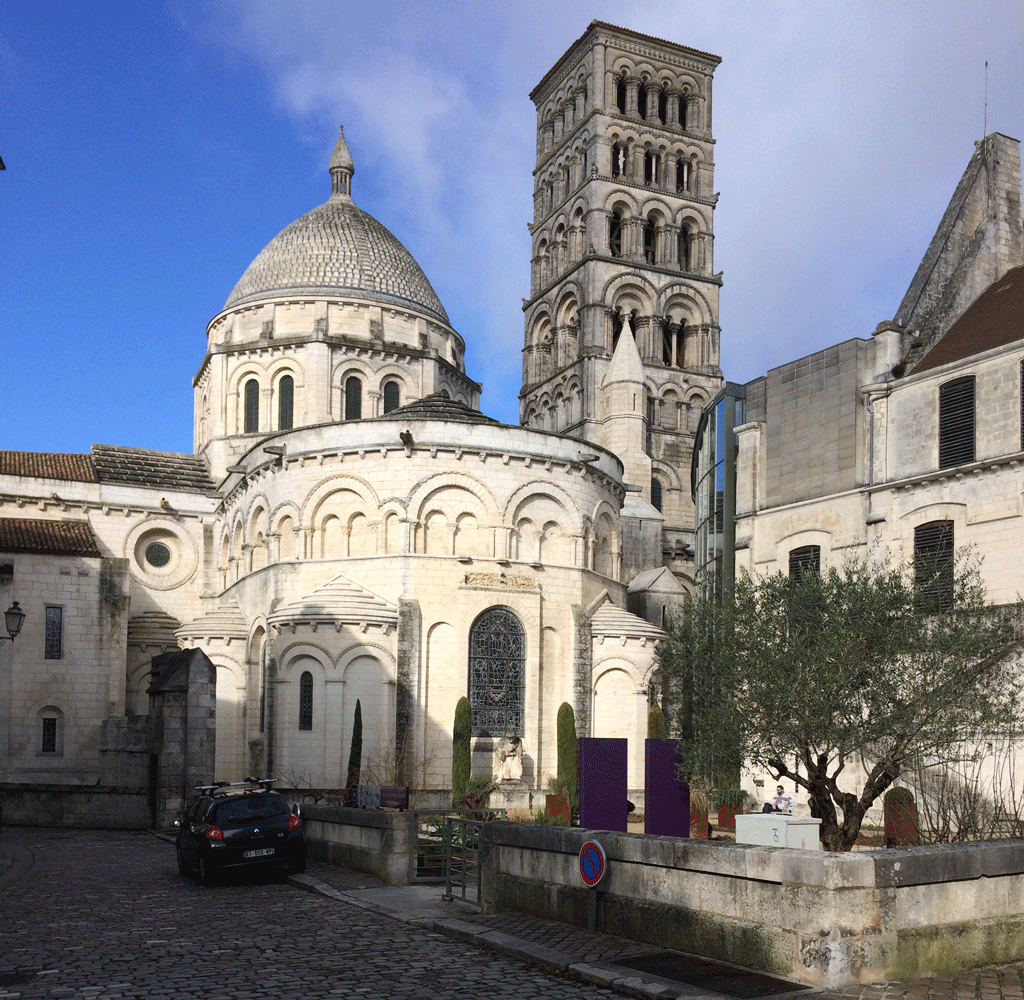
Travel-wise, 2017 was not quite as exciting as 2016 when we spent three months away altogether. However, we had a welcome short break and change of scenery in Angoulême at the beginning of February, followed by a most enjoyable week in Cyprus at the end of March with warm days and blue skies. We particularly liked the northern, Turkish part of the island with its wonderful painted monasteries.
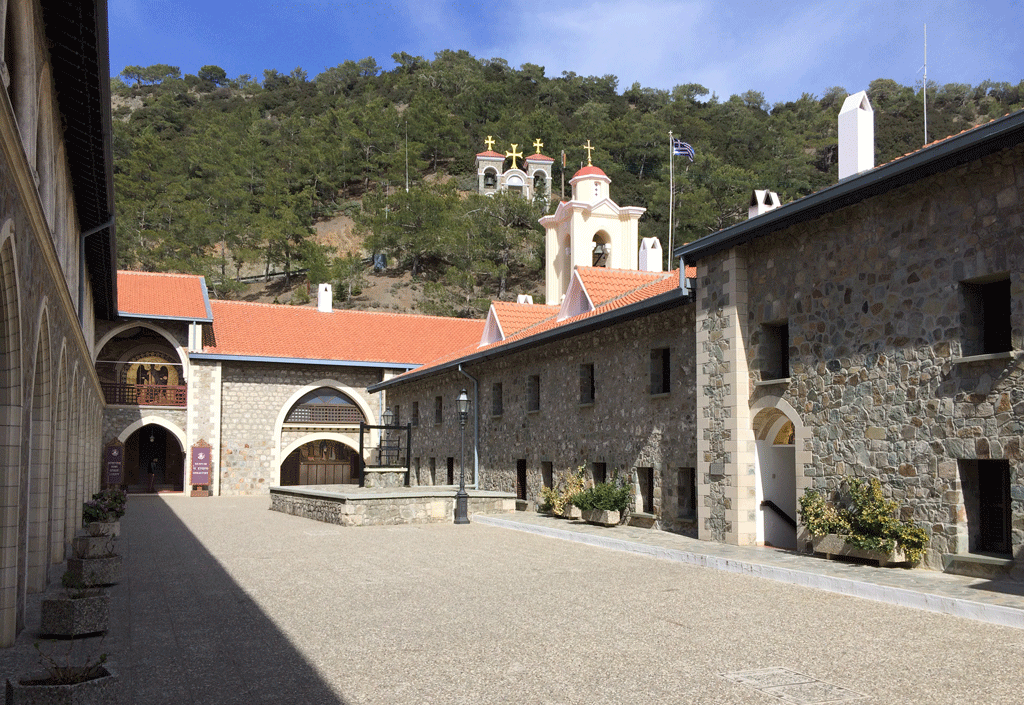
We came home to spring, always the best time of the year in the Loire Valley. In April we had a fun day in a vintage car traffic jam in Blois with our friends Susan and Simon who take visitors on tours of the Loire Valley in their 1953 Citroën Traction Avant. I checked out family photos of my baptism so we could dress the part.
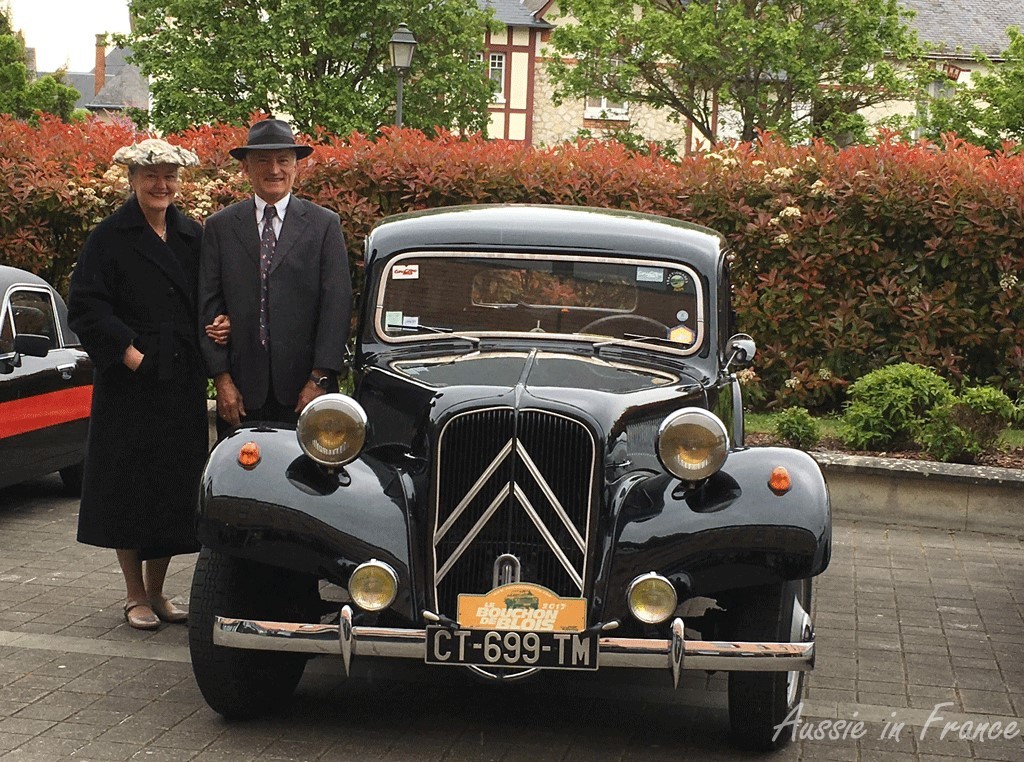
The end of April took us to the Médoc (a four-hour drive south) for another long weekend where we combined cycling with wine-tasting and a breath of sea air. Living in the centre of France means that we are well-placed for this type of excursion.
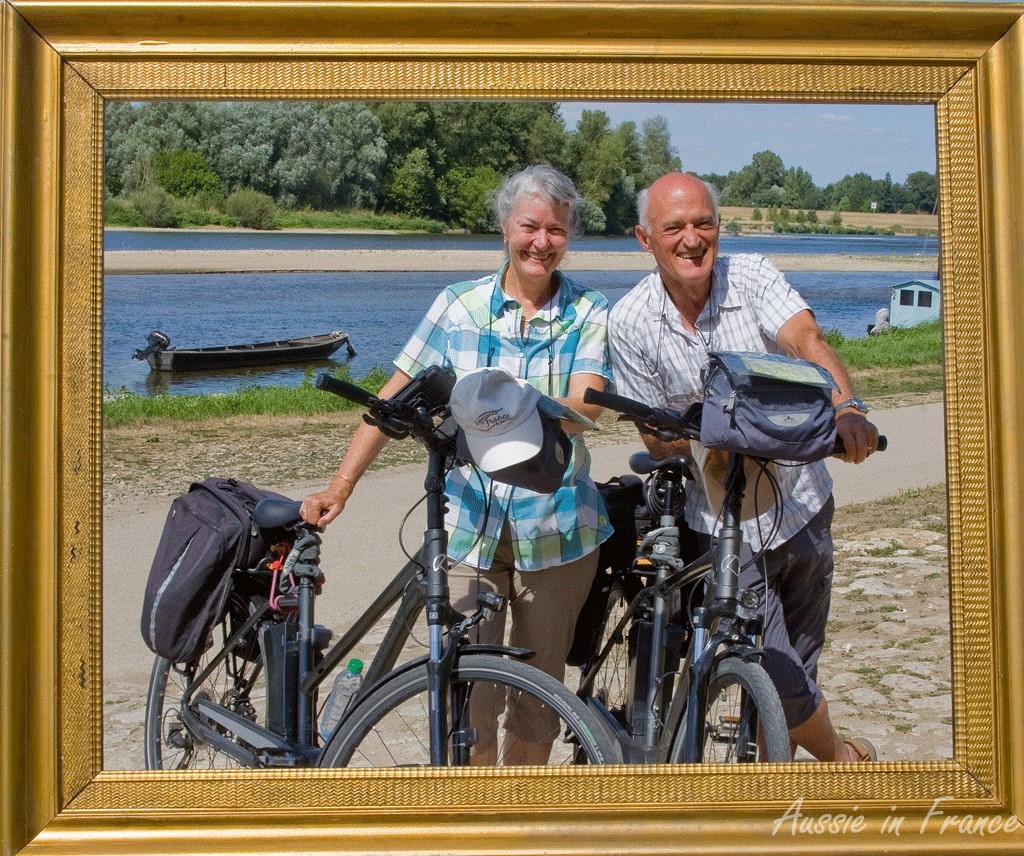
In May, we finally made the decision to invest in electrically-powered bikes for two reasons – to save our ageing knees and to free us from restrictions related to the lie of the land. Our plan was to go to Romania in June, a country we have avoided up until then due to its very hilly countryside. We were not disappointed. Jean Michel applied his usual thoroughness to choosing the right bikes for our needs and we can now go quite effortlessly up amazingly steep hills. In fact, I’m more worried going down but our disk brakes are reassuring.
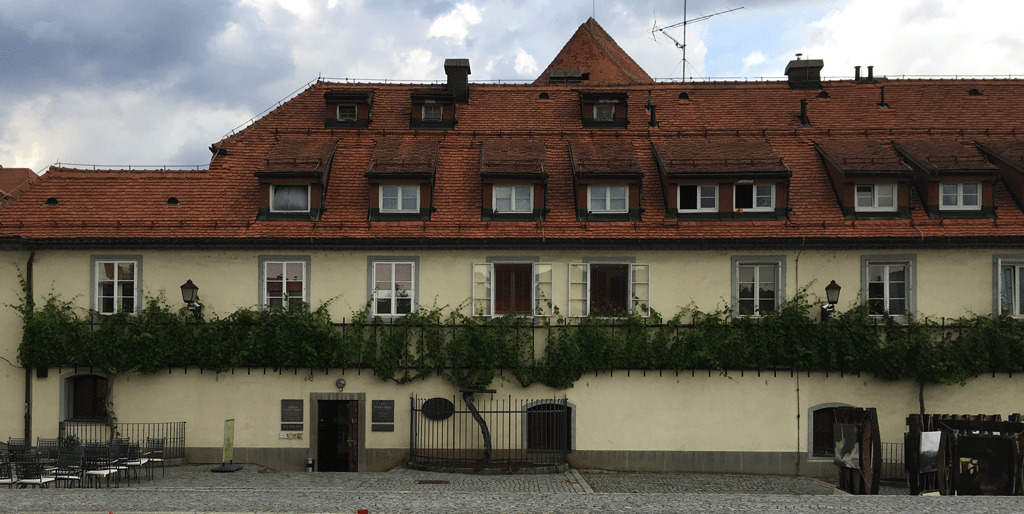
So, on 1st June, we left Blois with our bikes on the back of the car for a holiday that took us to Lake Iseo in the north of Italy, Maribor in Slovenia, where we tested our ability to scale new heights on our bikes, Eger in Hungary where we nearly got washed away in a freak flood, then Sighisoara in Romania, home of Dracula and sister city to Blois, which we used as centre to visit the fortified churches of Viscri and Biertan.
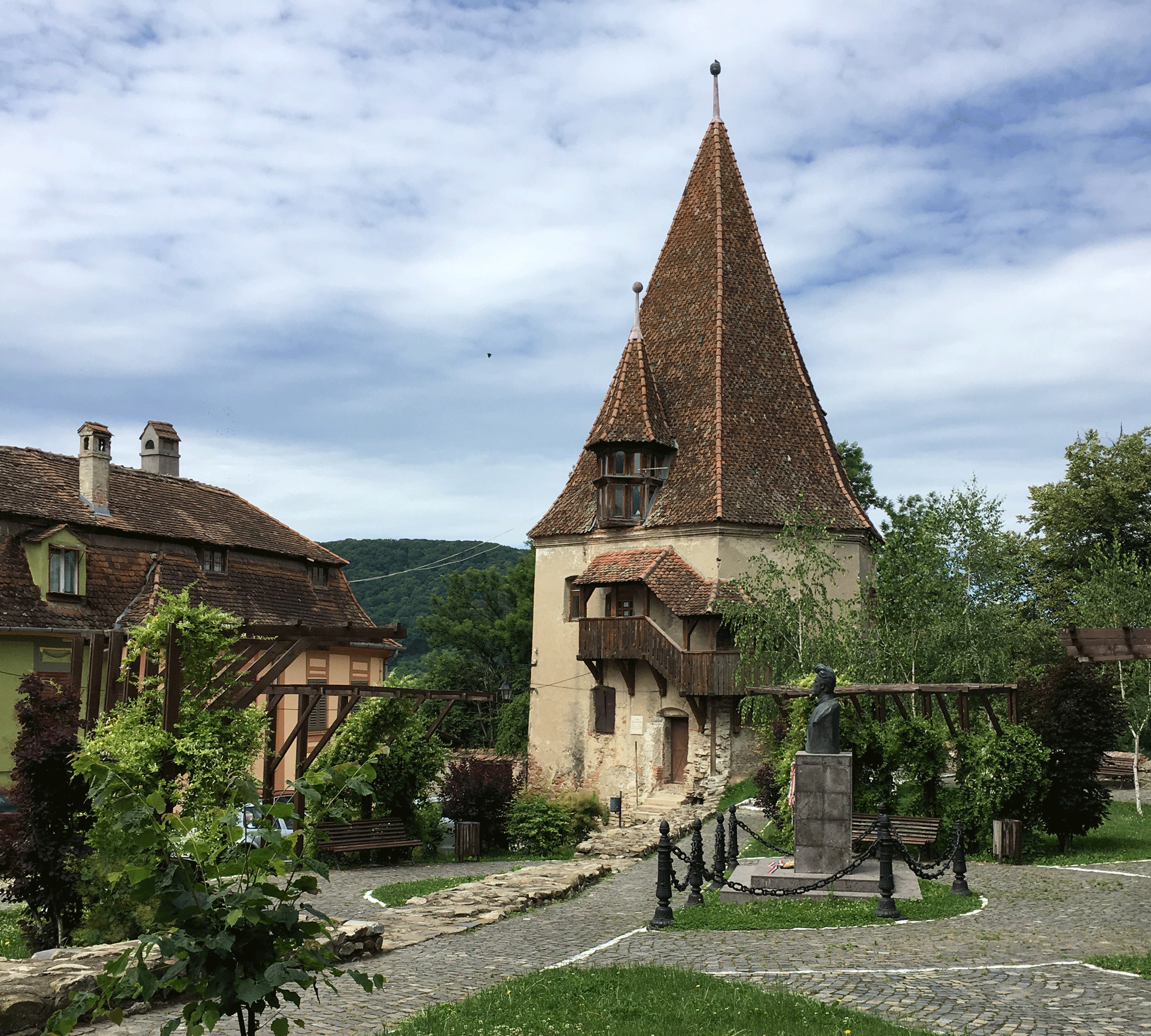
Suceava was the next port of call from which we cycled to many very beautiful painted churches, reminding us of our visit to Northern Cyprus. In Marmures, we stayed with a Romanian family where the head of the house spoke French and we learnt a lot about this still very backward part of the country with its beautiful wooden churches and friendly people.
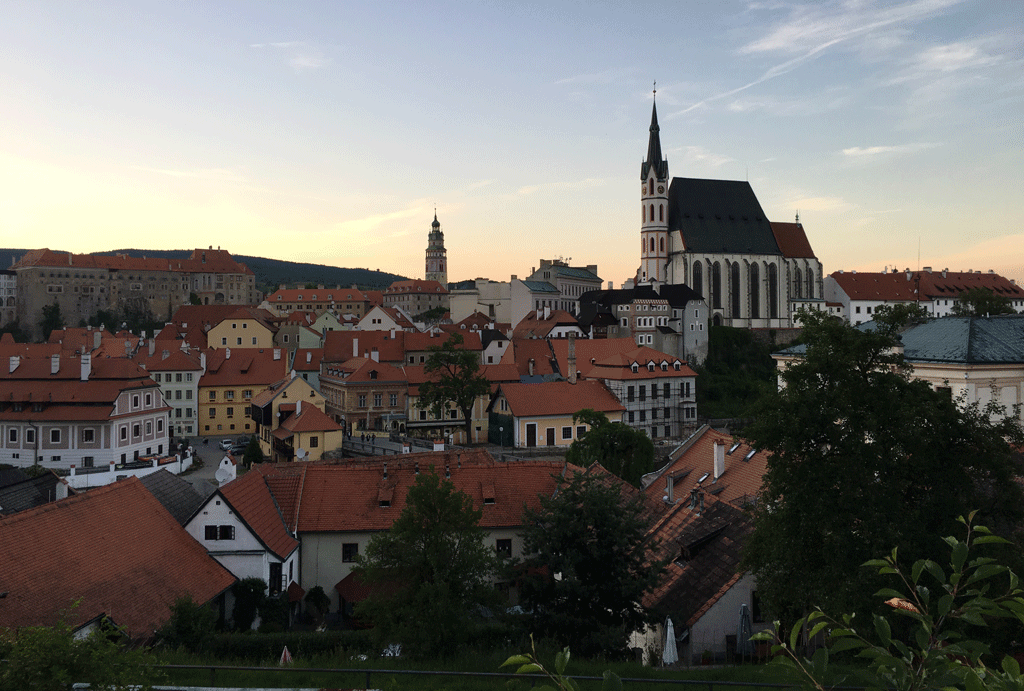
We then started on the road back to France, via Levoca in Hungary, then the absolutely enchanting village of Czesky Krumlov in Czech Republic where our hotel had a garden overlooking the castle, the perfect place for a picnic in the evening twilight after a hard day’s riding. We then stayed in Slavonice before crossing into Germany and discovering Burghausen with its marvellous hillside castle. It was good to be back in a country where I could at least read the signs!
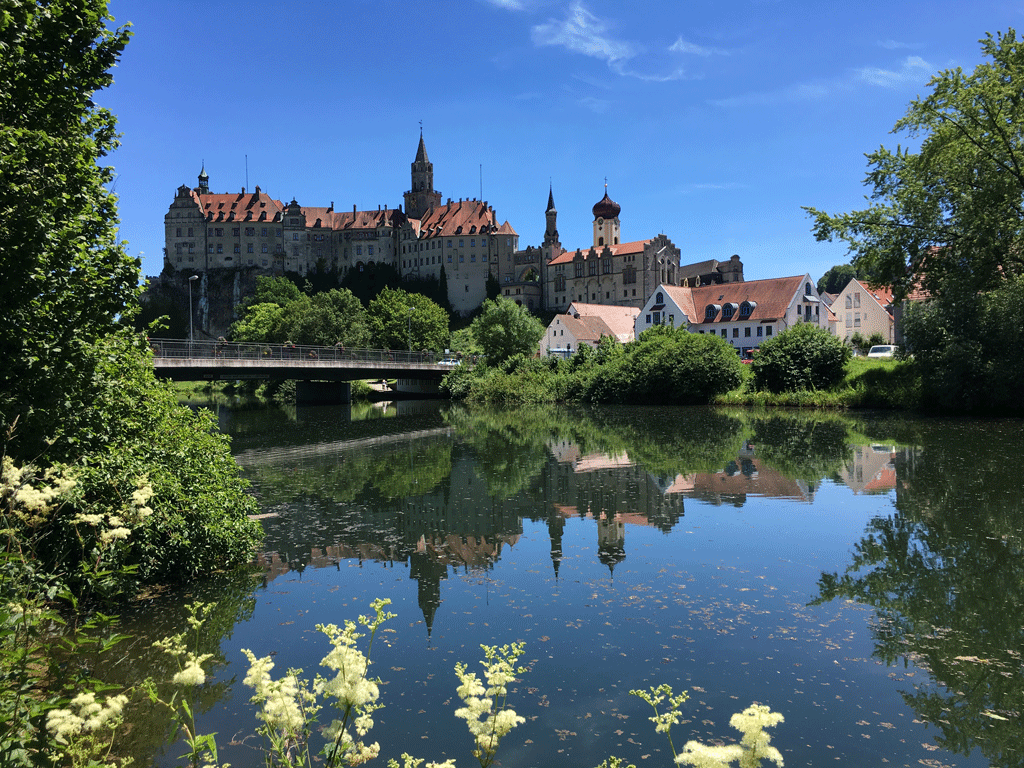
To end our journey, we decided to return to our beloved Danube using the little village of Herbertingen as our base. Taking the train and cycling, we went as far as the source of the Danube at Donaueschingen.
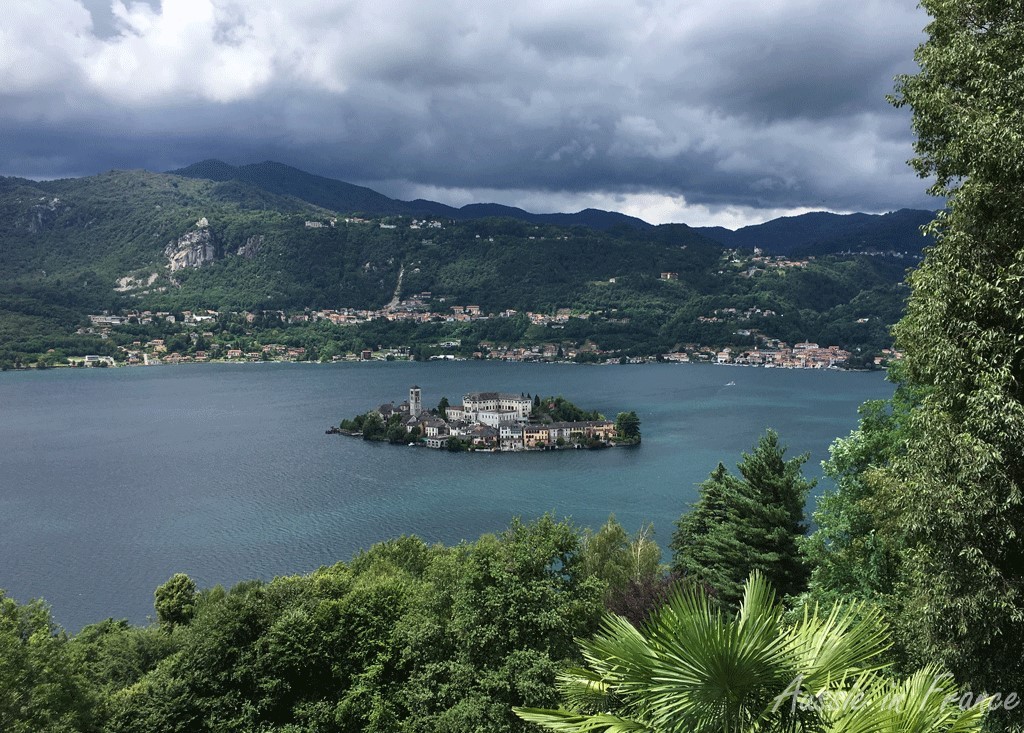
By the 28th June the weather was starting to deteriorate so we changed our initial plan to spend a couple of days in the Black Forest and went to Orta San Giulio in Italy instead where rain and shine alternated enough to let us ride around Lake Orta and up to the sanctuary of Madonna del Sasso, at an altitude of 700 metres! Once again, our power bikes proved their worth. We arrived home via Lyon on 2nd July, having been in eight coutries and covered 5,000 kilometers.
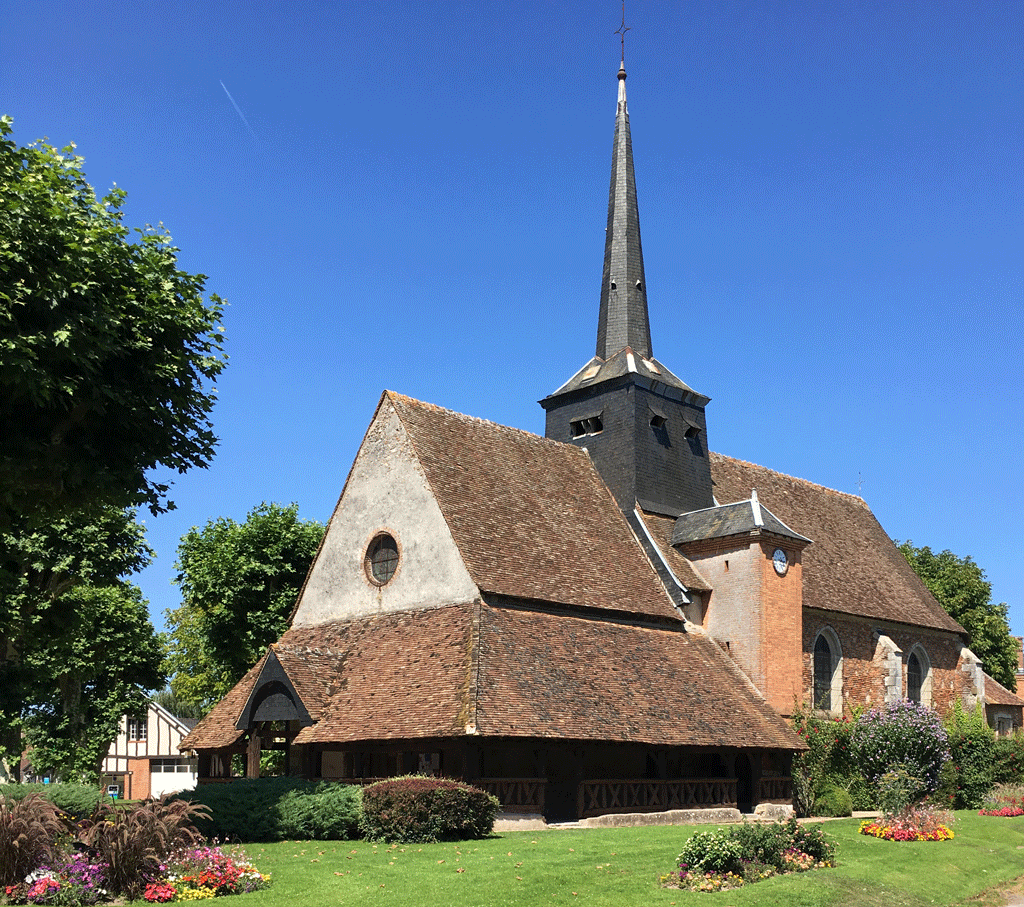
In July Jean Michel went walking in the Jura Mountains for 9 days with his sons while I stayed home and worked, looking forward to my retirement in June 2020 more than ever! I did discover a bike route into Blois that avoids the main road though. We then cycled as much as we could during the weekend and evenings until the weather turned too cold.
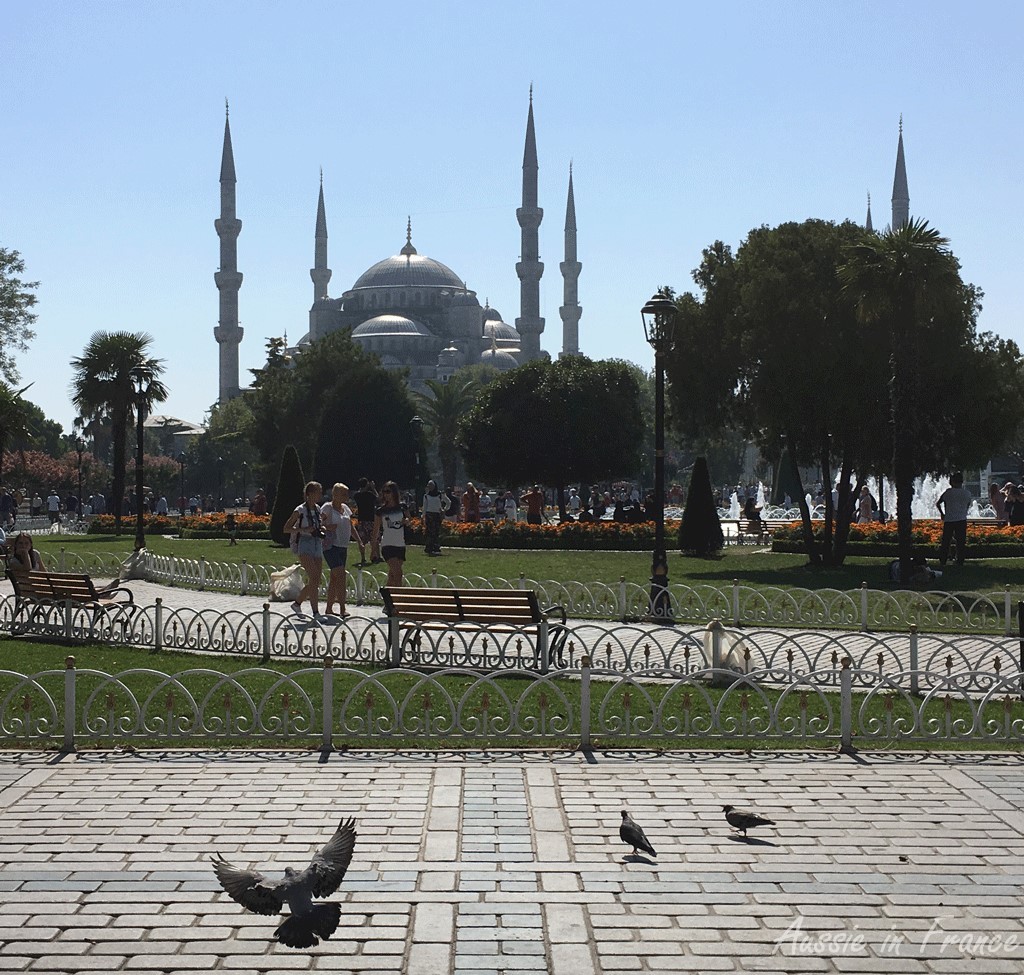
September took us for a week to Istanbul which we loved. We rented an apartment just next to Galacta Tower which proved to be the perfect location. It had a quiet little balcony and small garden which provided well-earned rest after a day out in the busy streets of Istanbul. We often set out quite early to visit the sites to avoid the crowds.
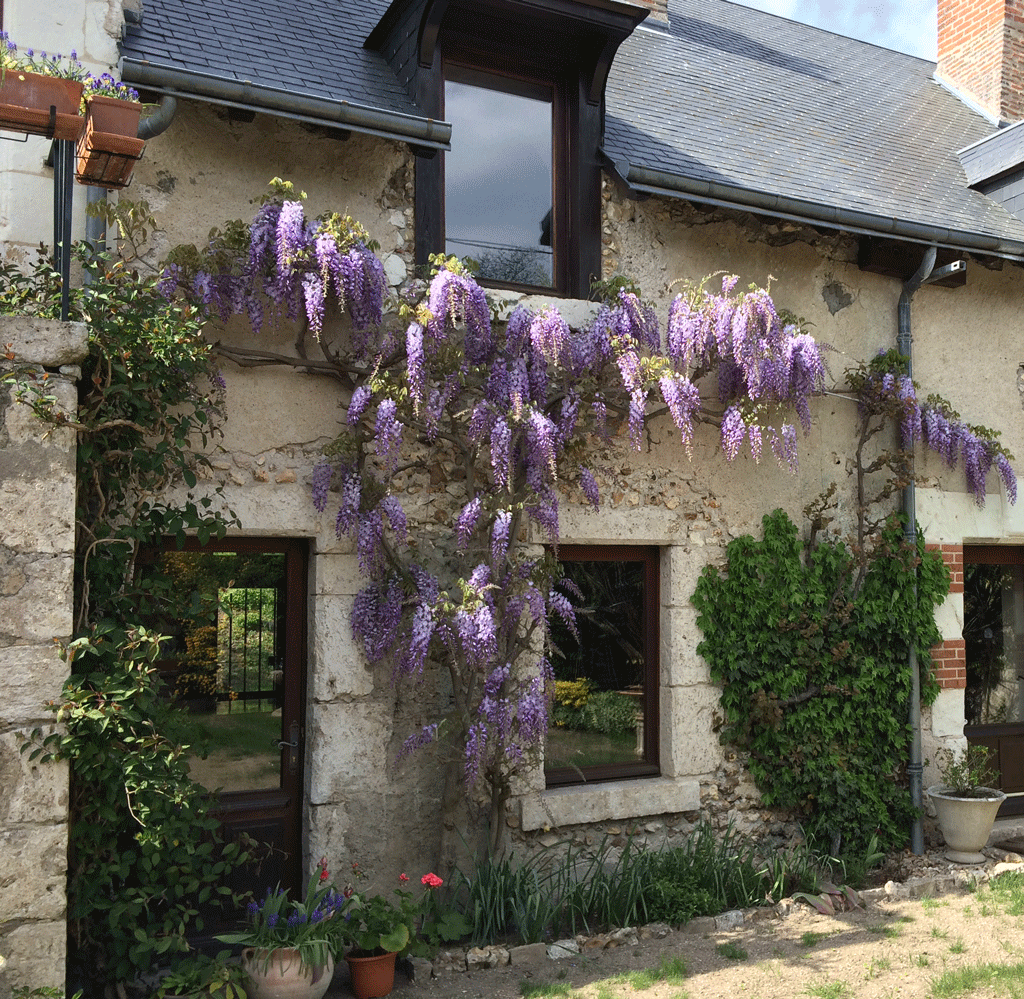
On the home front, our automatic watering system is up and running but we don’t quite have a mini Giverny as initially planned, mainly due to our clayey soil, but we are learning as we go.
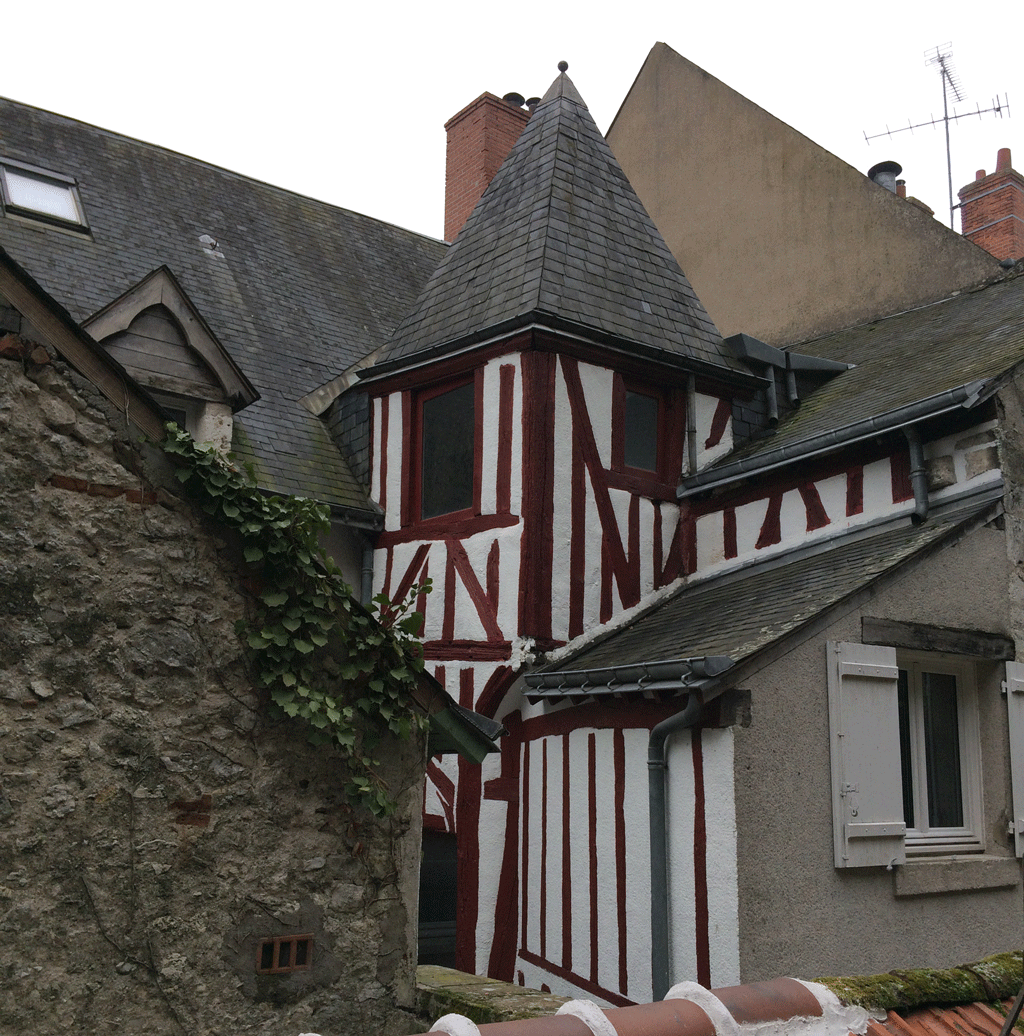
Renovation of the studio flat I bought last year is making progress at last and should be ready for holiday accommodation this summer. We plan to offer an 18th century decorative experience with all modern conveniences. It is ideally located in the most historical part of Blois known as Puits Chatel and even has a little shared garden.
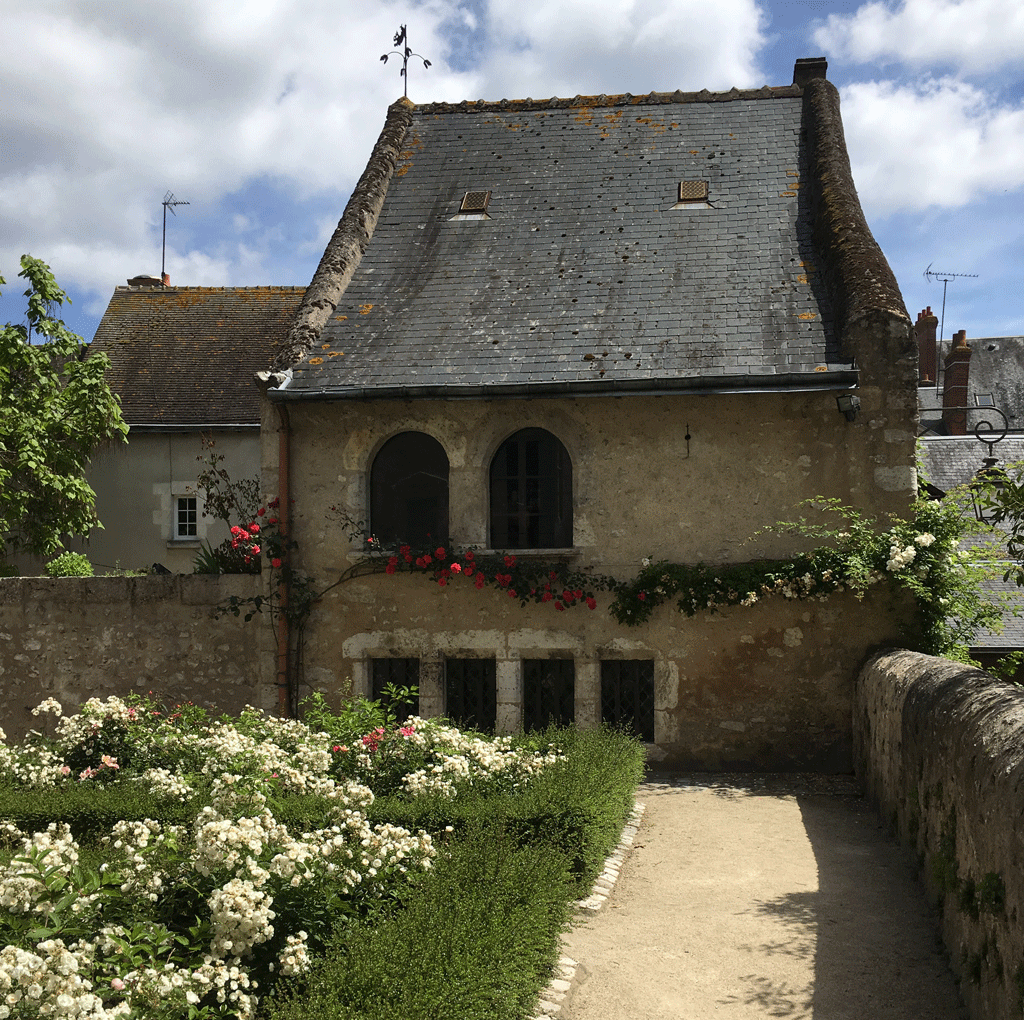
I’m still keeping up with my daily photo on Loire Daily Photo even though Aussie in France is vitually at a standstill but I hope to be able to post more in the future, especially when I retire!
Friday’s French – courant, current, actuel, actual
These are more of those look-alike words that the French call faux-amis.
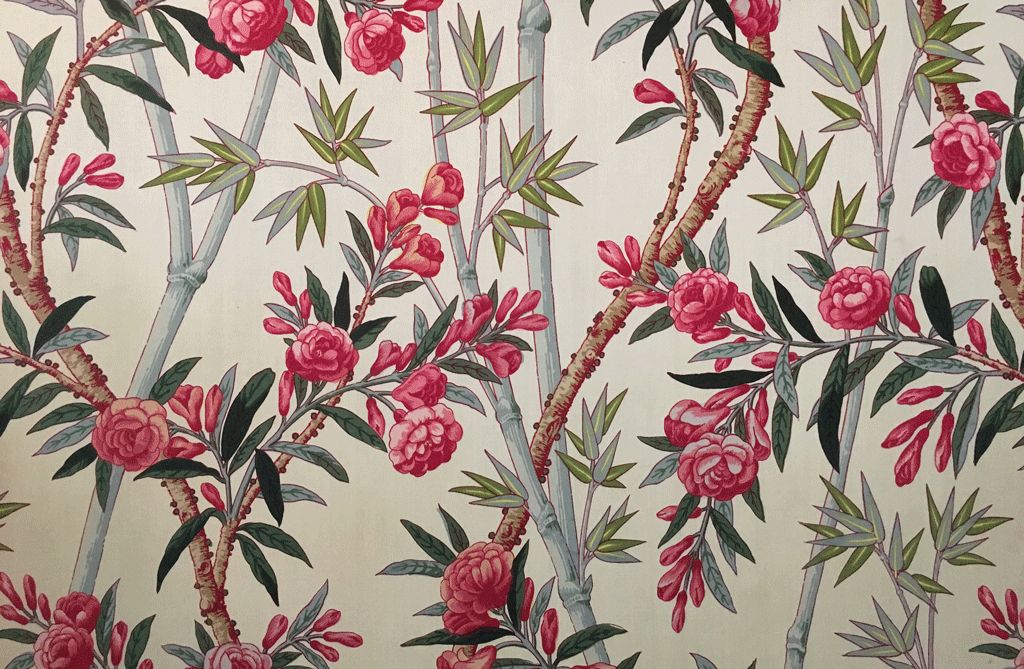
We’ll start with courant which has a few different meanings. We’re only going to look at adjectives here.
Les dépenses courantes d’une maison, for example, are ordinary or everyday expenses. Un mot courant is a standard or ordinary word.
Une pratique courante is standard practice and un travail courant is routine work.
Le recours aux intermittents est une pratique courante des chaînes de télévision – Employing contract workers is standard practice in television.
It can also mean common – Ce genre d’incident est très courant ici : This kind of incident is very common here or This kind of thing is a common occurrence here.
Its English look-alike, “current”, has a different meaning.
Le cours actuel du dollar est plus élevé qu’au mois de mai : The current exchange rate of the dollar is higher than it was in May.
Currents events are évènements actuels or, more commonly, l’actualité which is invariable except when used to mean the news on TV or radio which are called les actualités. Je l’ai entendu aux actualités ce soir : I heard it on the news tonight. Les dix sujets d’actualité les plus recherchés sur Yahoo! en 2016, en France, sont le Bréxit, les attentats, les Panama Papers et le crash d’Egyptair : Yahoo!’s top ten searches and news stories in 2016 in France were Brexit, the terrorist attacks, the Panama Papers and the Egyptair plane crash.
The current month is le mois en cours while her current boyfriend is son petit ami du moment. I always think the expression petit ami or petite amie is very amusing. Translated literally, its gives “her little friend” which we would only use in English to describe a child. Copain or copine can also be used to mean boyfriend or girlfriend unless of the same sex in which case it means buddy. If a boy says C’est nouvelle copine, it means he has a new girlfriend. If he says J’ai un nouveau copain, it means he has a new buddy. However if he says, speaking about a particular girl, C’est une copine, c’est tout, then it means she’s just a buddy. Sort of confusing, I know, but it’s all about context.
Another meaning of the English word current revolves around the idea of being widely accepted or used. This can be translated in various ways in French, depending on the circumstances, and can include courant. Otherwise, commun or en cours. A current account is a compte courant, that is, an ordinary account.
There is a current idea that up to 30% of the warming last century was due to solar effects – Selon une idée courante, jusqu’à 30% du réchauffement planétaire le siècle dernier est dû aux effets solaires.
To go back to actuel, it also means at the present time, which gives expressions such as à l’heure actuelle (at present, at the moment), à l’époque actuelle (nowadays, in this day and age), le monde actuel (the world today, the present-day world) and even l’actuel Premier minister (the current Prime Minister).
So if actuel more or less corresponds to current or present, what does actual correspond to? It’s most common meaning is real, that is, which something that exists, or is happening at the present time.
There is no actual contract : il n’y a pas vraiment de contrat.
An actual fact is un fait réel, actual size is grandeur nature (as in real life) or taille réelle (a specific measurement).
There is another slightly different meaning: the actual film doesn’t start until 8.55 – le film ne commence qu’à 20 h 55. This is the actual house (as opposed to the barn and garage): Voici la maison elle-même or if it’s something that has been mentioned previously, Voici la maison en question.
In actual fact corresponds more or less to en fait, which is not the same as in fact. You can tell me why after studying the following sentences.
In actual fact, I don’t like strawberries, but I eat them to be polite. En fait, je n’aime pas les fraises mais je les mange pour être polie.
He’s annoying, in fact, he’s very annoying indeed. Il est embêtant, il est même très embêtant.
Roses, Chambord Gardens and a Birthday
I think I should begin with an explanation about why I haven’t posted since the begininng of June! It’s very simple – lack of time! I used to post every day when on holidays but realised that Jean Michel had ended up writing the travel diary by himself and our evenings were completely tied up as a result. When we’re at home and I’ve been translating all day, I don’t really feel up to writing blog posts. I do, however, keep up my Loire Daily Photo blog (almost daily). The good news is that, I have had some time this week to write a post for Aussie in France so here we go.
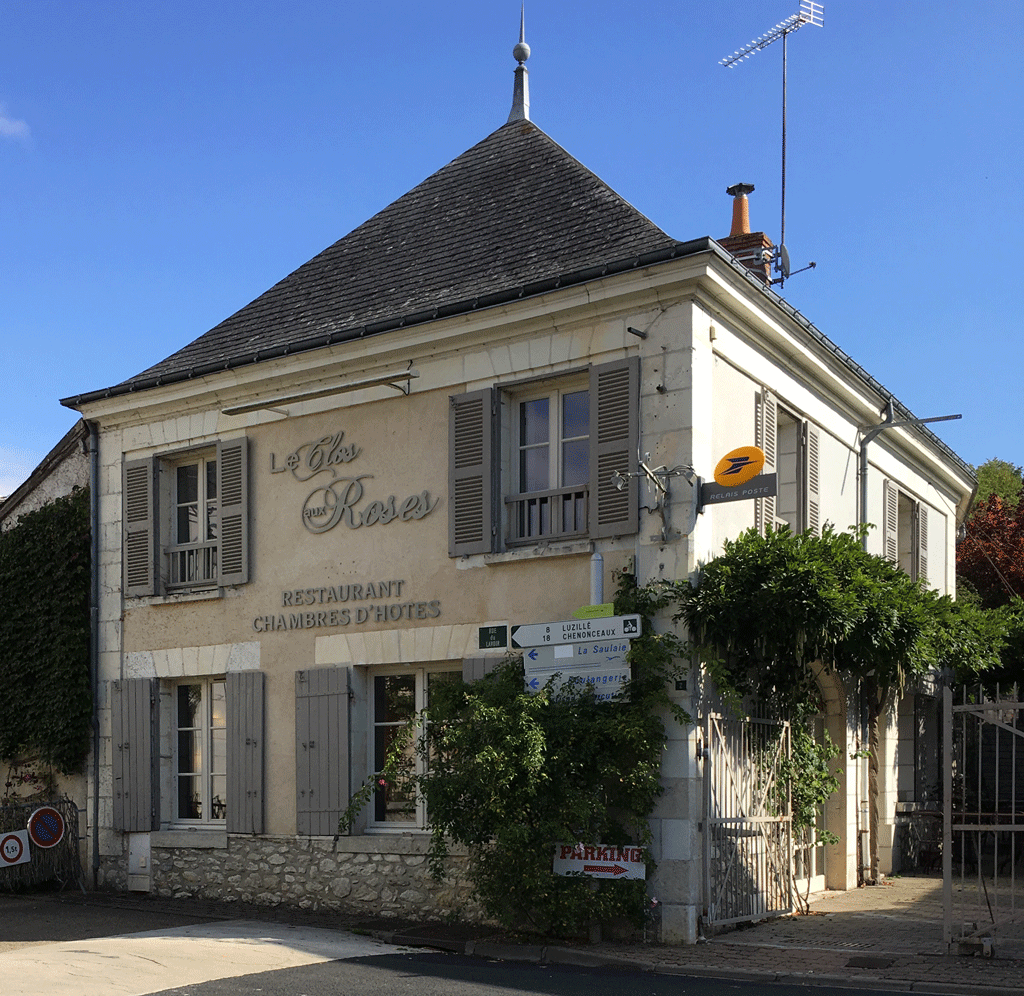
Birthdays and anniversaries are always a good excuse to discover new restaurants, but by October, a lot of places have closed for the season. With the ever-helpful advice of my friend Susan from Days on the Claire, we choose Le Clos aux Roses in the beautiful little village of Chedigny in Touraine. We drove through it recently and discovered it is famous for its roses. A rose festival is held there in May on Mothers’ Day every year. We book a table for lunchtime on Wednesday as it is closed on Mondays and Tuesdays.
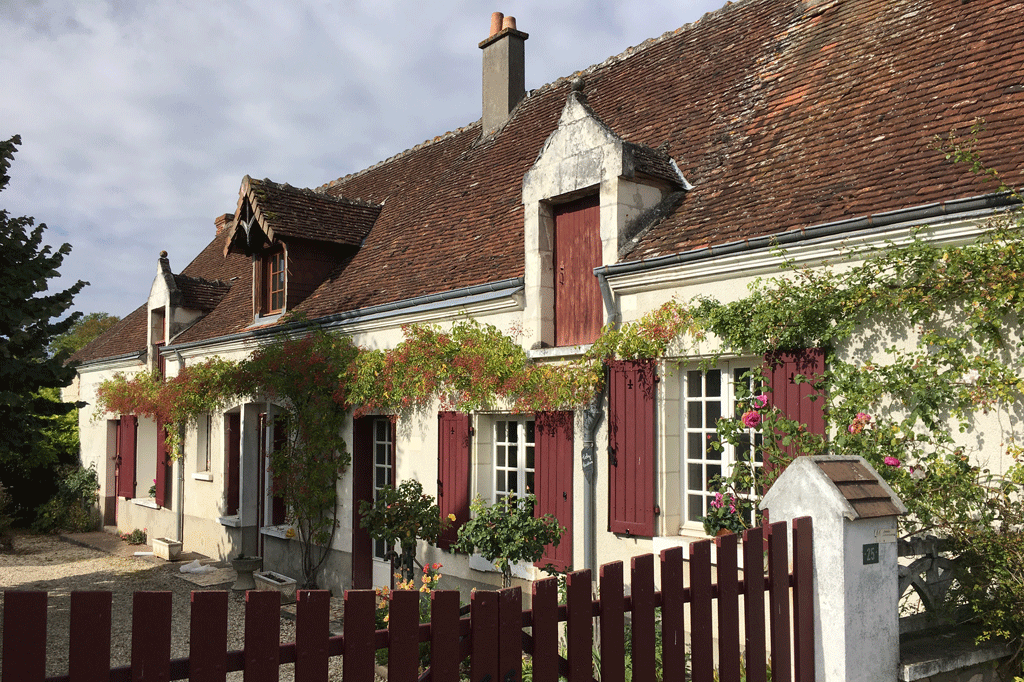
The weather is spectacular, especially for October, and we arrive in Chedigny around 11.45 am, which is plenty of time to wander around the little village admiring the little cottages and gardens. There are still flowers in front of the church and more roses than I would have thought at this time of the year. It must be truly magical in May and June.
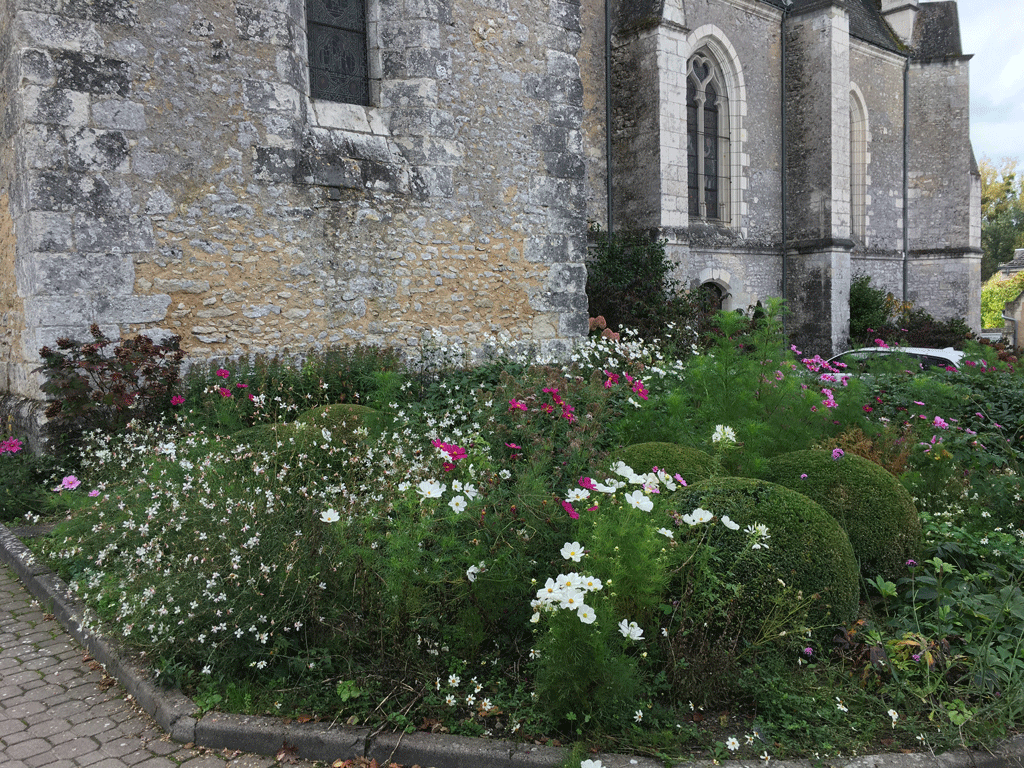
The restaurant is quite empty to start off with but gradually fills up while we are there. With a set lunch menu at 12 euro 30, I’m not surprised it’s popular. We choose the Discovery menu at 40 euro each. It includes an amuse-bouche with our vouvray, a starter, a fish dish, a meat dish and a dessert. We decide on local wines by the class so that we can pair.
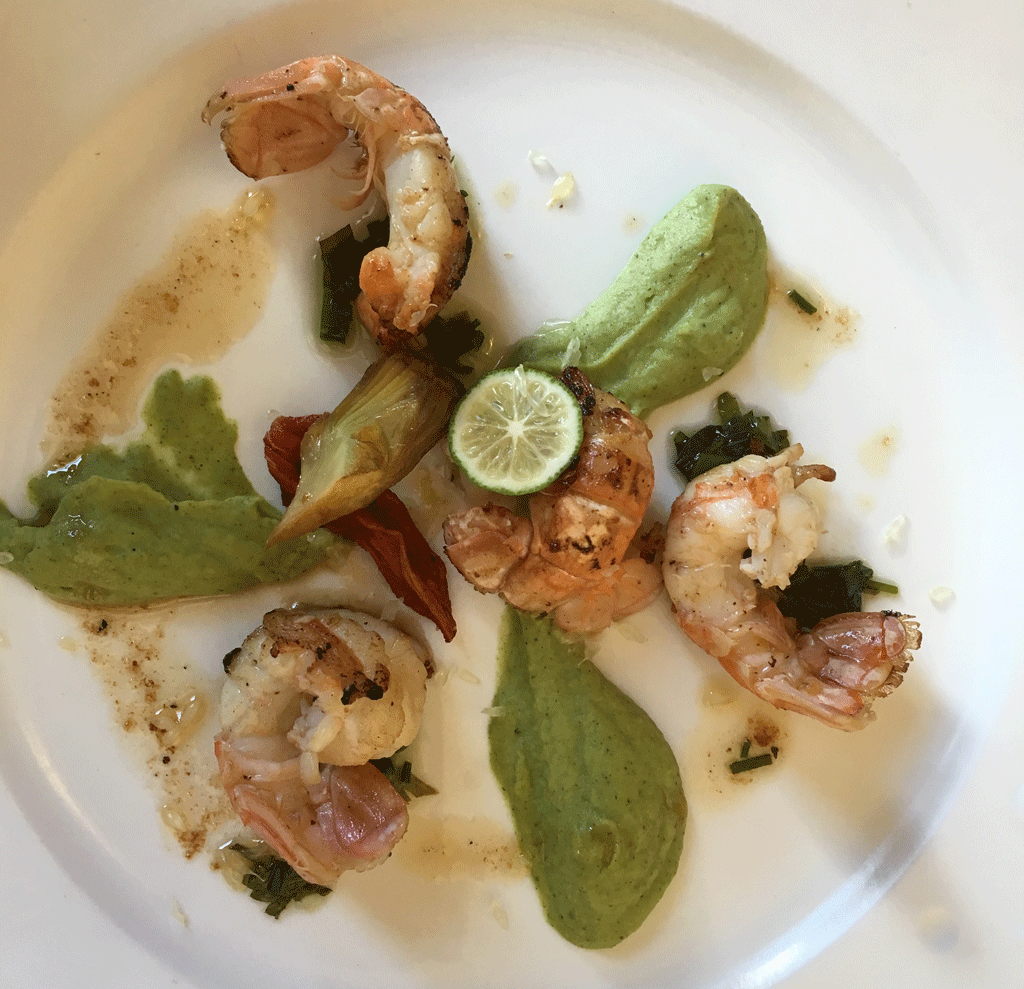
Jean Michel has a vol au vent de ris de veau et langoustines, while I have the foie gras. Then we both have the écrevisses followed by duck served with fresh vegetables from the chef’s garden. Jean Michel has a mint and blackcurrant Norwegian omelette while I have a chocolate dessert. We enjoy everything except the desserts which are a little disappointing.
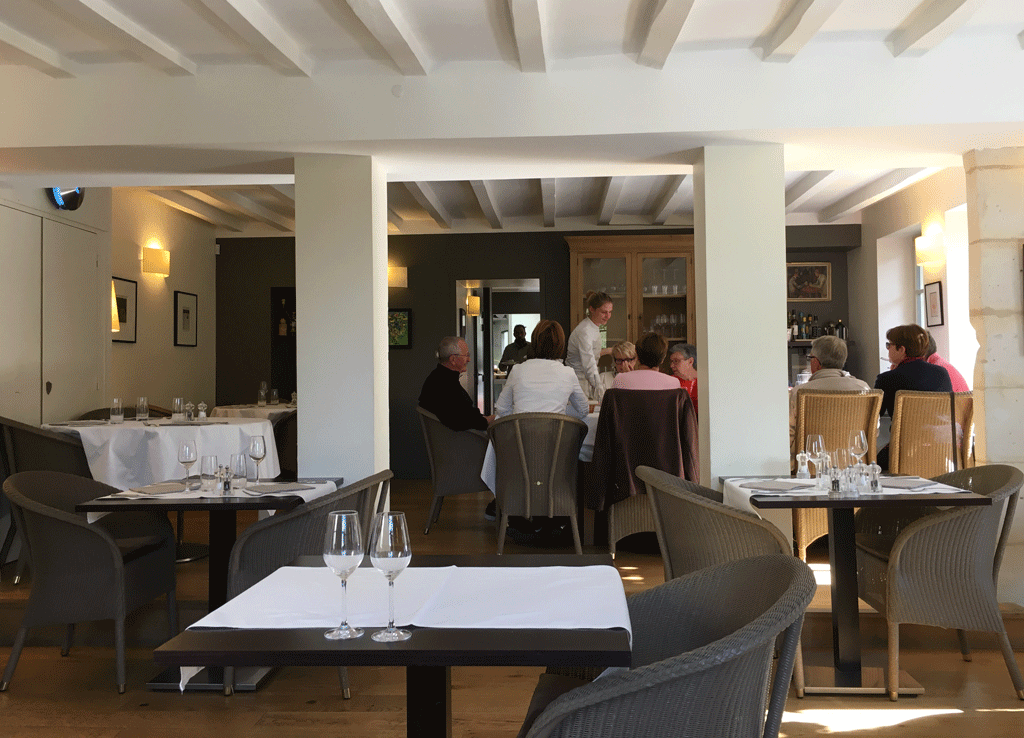
The service is friendly and relaxed, with monsieur waiting on table and madame in the kitchen, helping in the dining room from time to time. Armelle Kraus is an up and coming chef from the Ecole Supérieure de Cuisine Française Grégoire Ferrandi in Paris. Her creations are based “on a deep respect for nature and the magic of tradition”. We will be going back there in May when the roses are out (but not during the festival weekend when it is very chaotic, we are told).
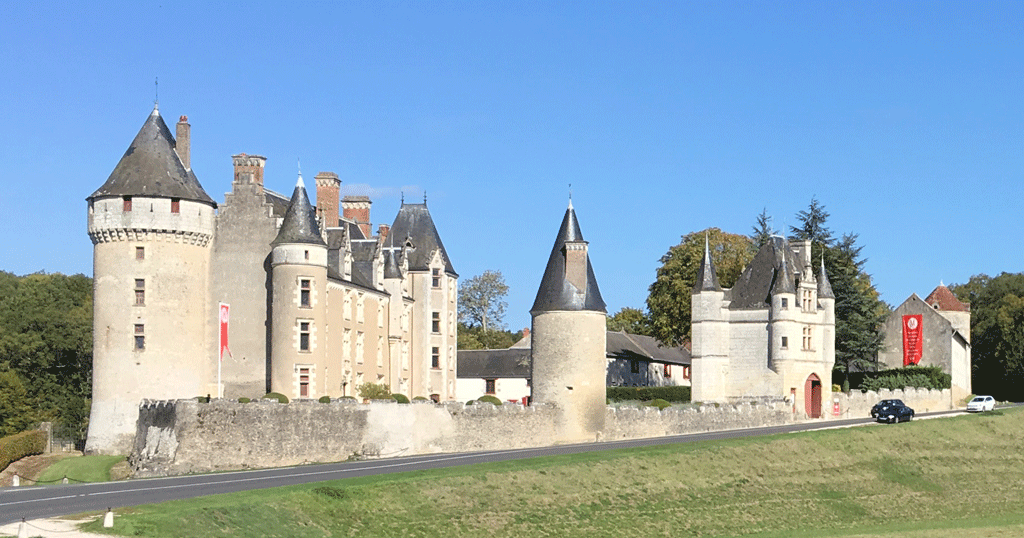
We then head for Château de Chambord, which isn’t exactly next door (over an hour away) but the countryside is lovely and takes us past Montpoupon Castle, Montrichard and Fougères Castle! We marvel at the fact that we are in close proximity to so many beautiful architectural masterpieces.
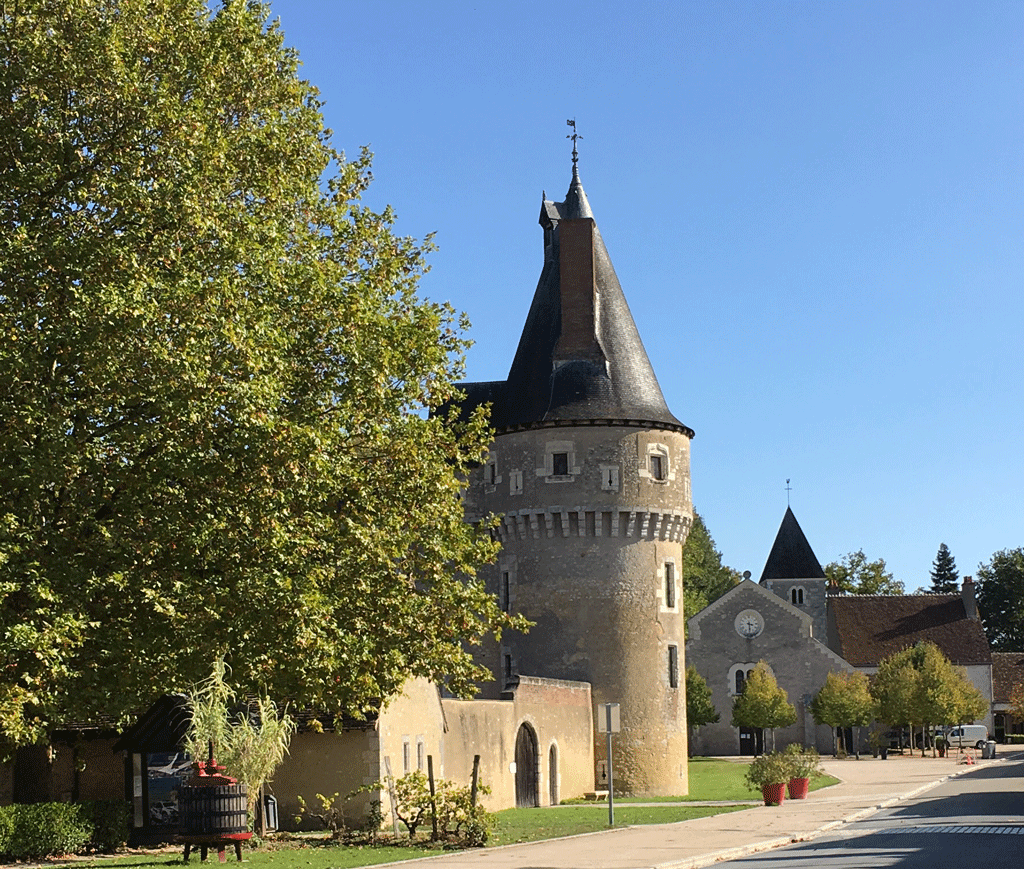
At Chambord, we park and go to get our free passes. From mid-September to mid-October, entrance to the castle is free this year for people living in the area. We tried on Sunday but the queues were so long that we bought an ice-cream instead, walked along the canal and went home! I love the fact that the locals like to visit their castle. It’s the only one in the Loire Valley whose grounds are open free of charge to everyone all year round. We often cycle there in the summer just to have an ice-cream with a view!
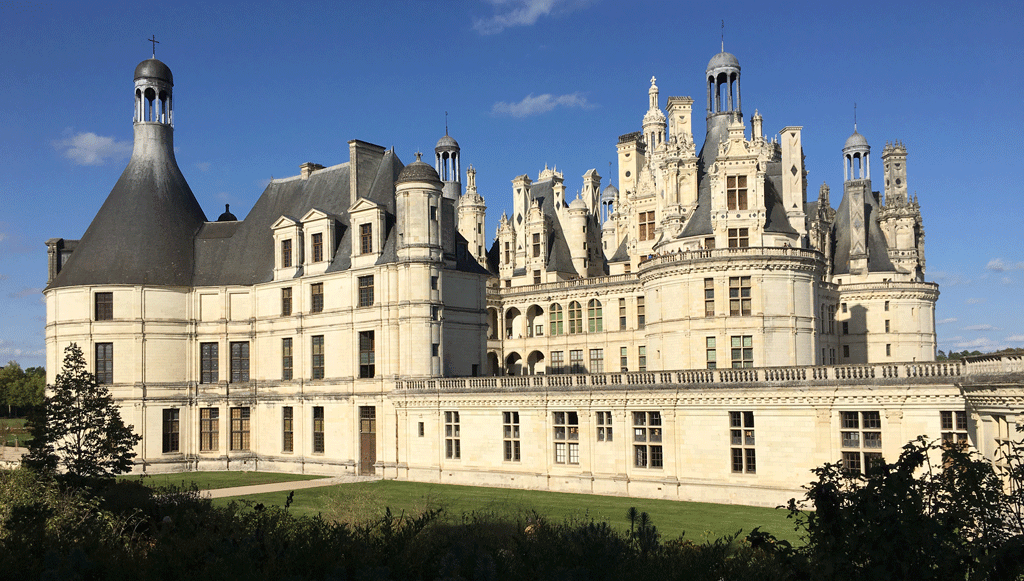
However, we have not yet seen the newly-restored 18th century formal French gardens which only opened this year. We start with the rooftop terrace with its famous chimneys so that we can see the gardens below, by far the best view. We walk right around the terrace so we can view the surrounding countryside from every side then complete the visit by wandering around the gardens themselves. However, it is still early days yet and they are not nearly as impressive when you’re at eye level.
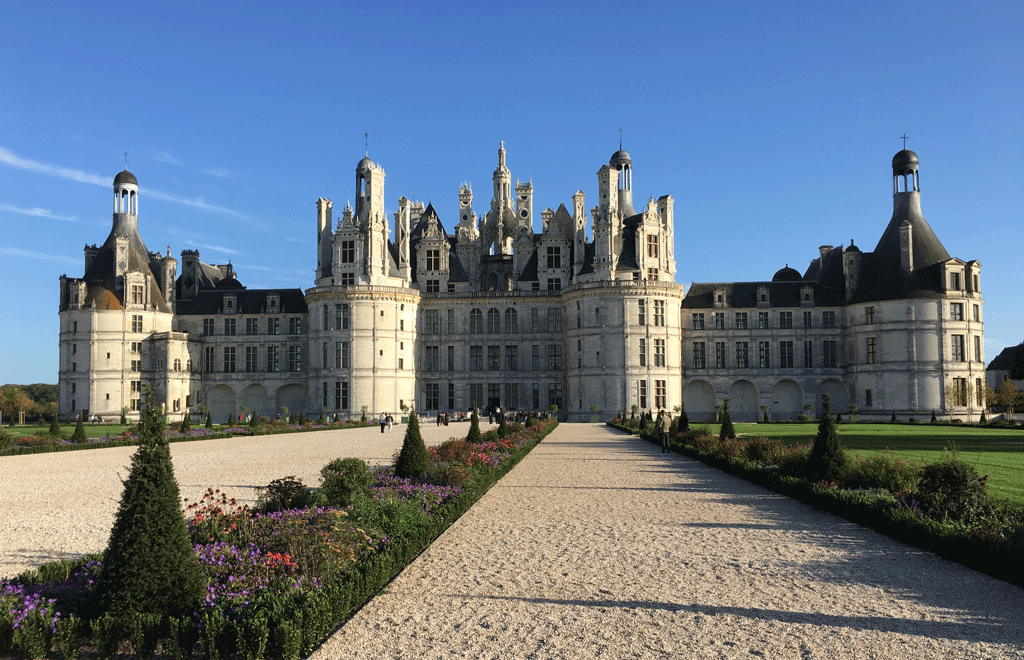
I thought we had visited all the rooms in the castle itself, but additional wings have been opened since our last visit. None of the furniture and furnishings originally come from the castle which was a hunting lodge and completely empty most of the year. When François I came to visit, he brought everything with him. I like the “18th century’s apartements” best (that is not a spelling mistake on my part – it’s what the sign says!).
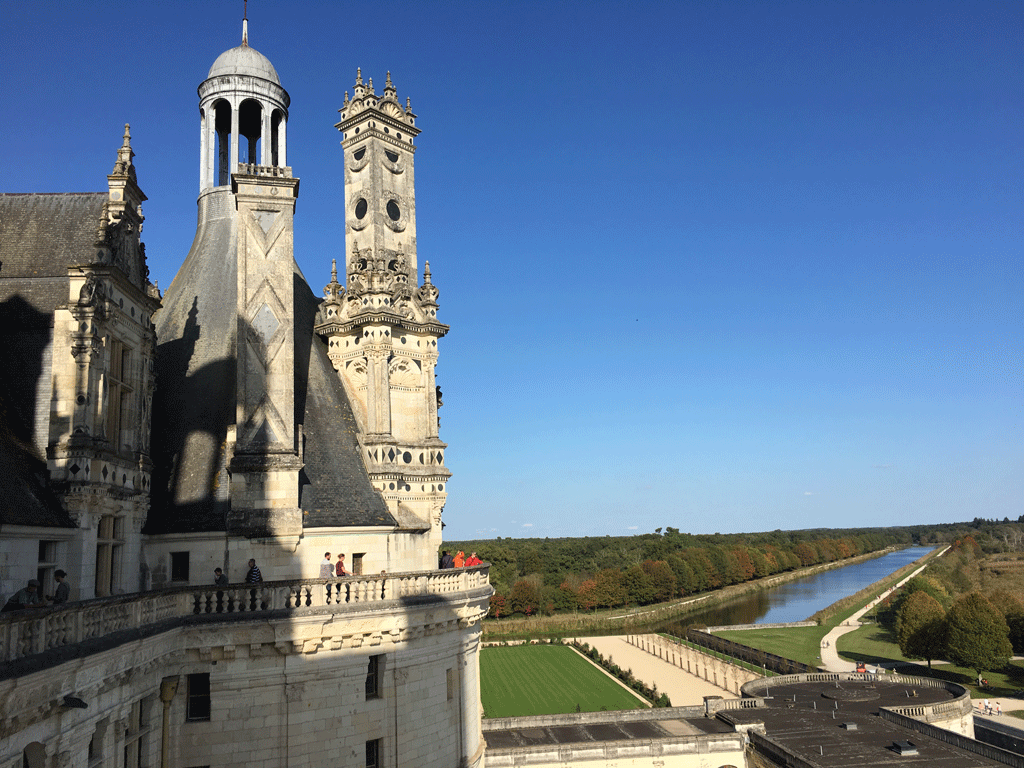
We also take a look at the newly-restored kitchens before we leave but they are not of any particular interest.
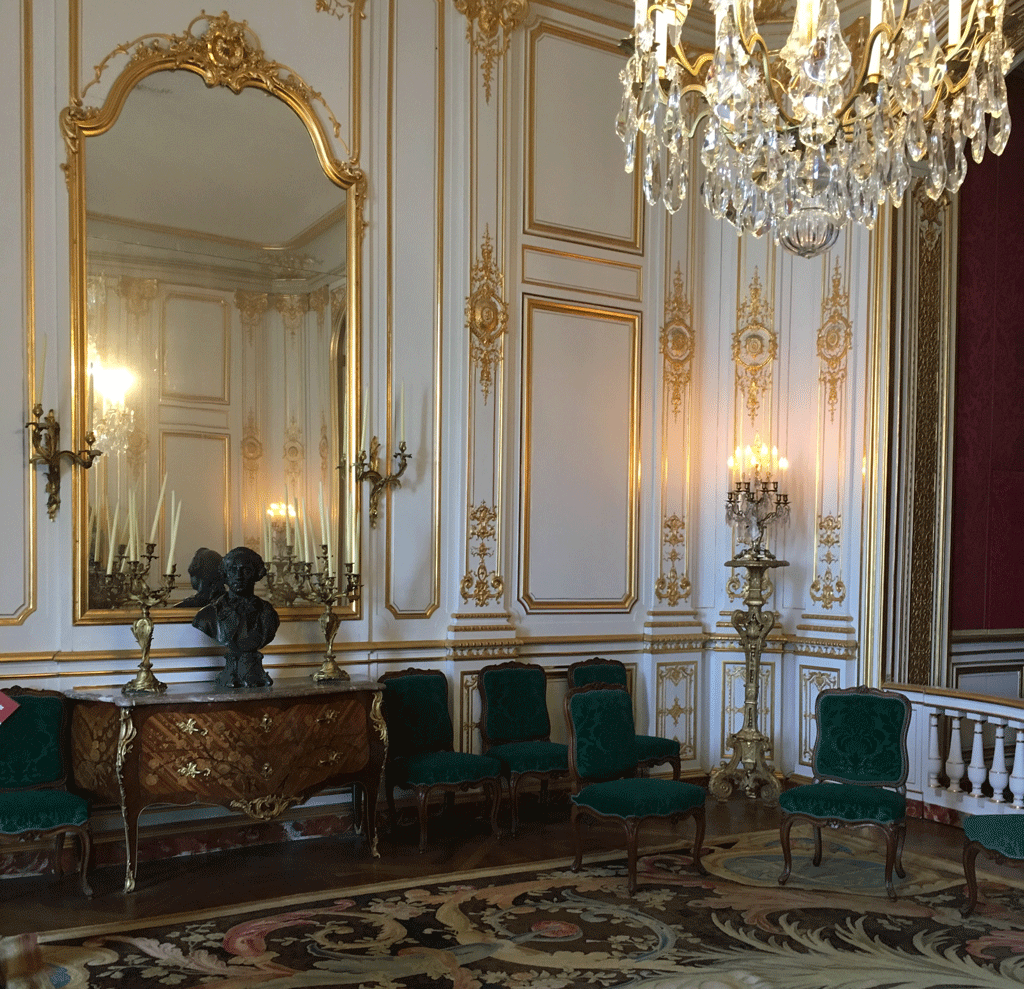
The way out is through the very large shop, something I usually avoid, but today I find four tapestry cushion covers for our new sofa which are just the perfect colour and design!
Le Clos aux Roses
www.leclosauxroses.com
2 rue du Lavoir
37310 Chédigny
leclosauxroses@gmail.com
Wednesday to Sunday noon included.
Closed Sunday evening.
02 47 92 20 29

